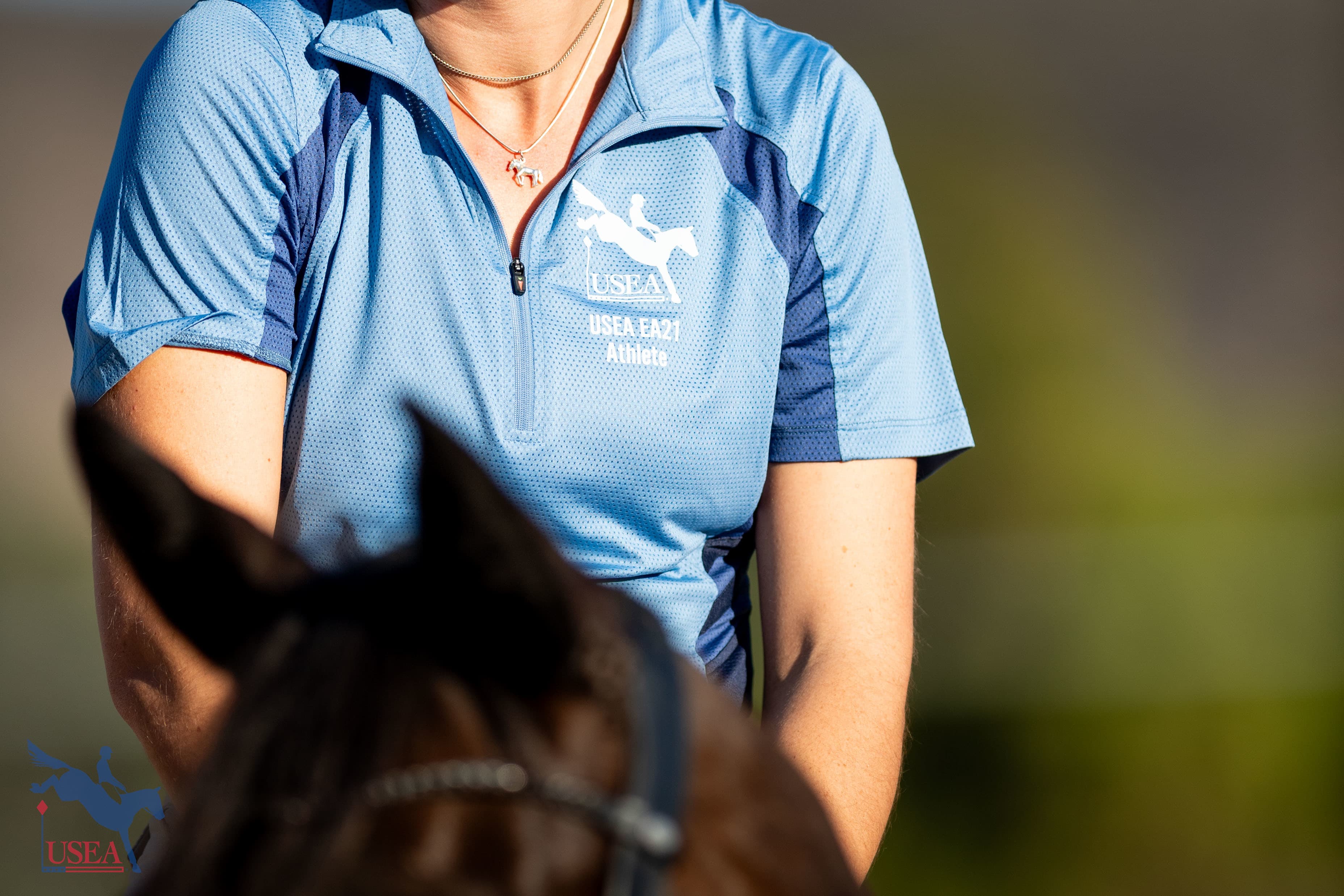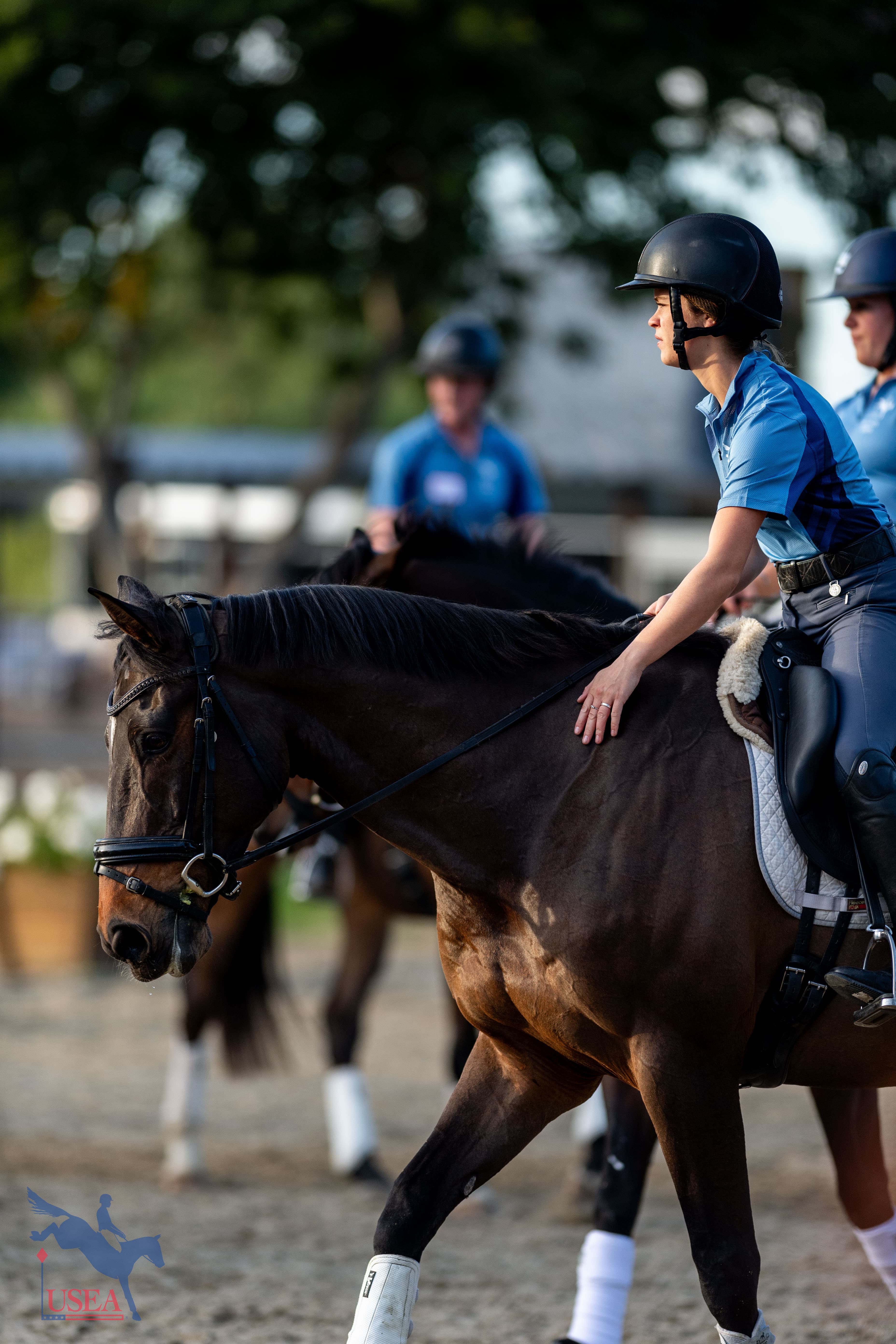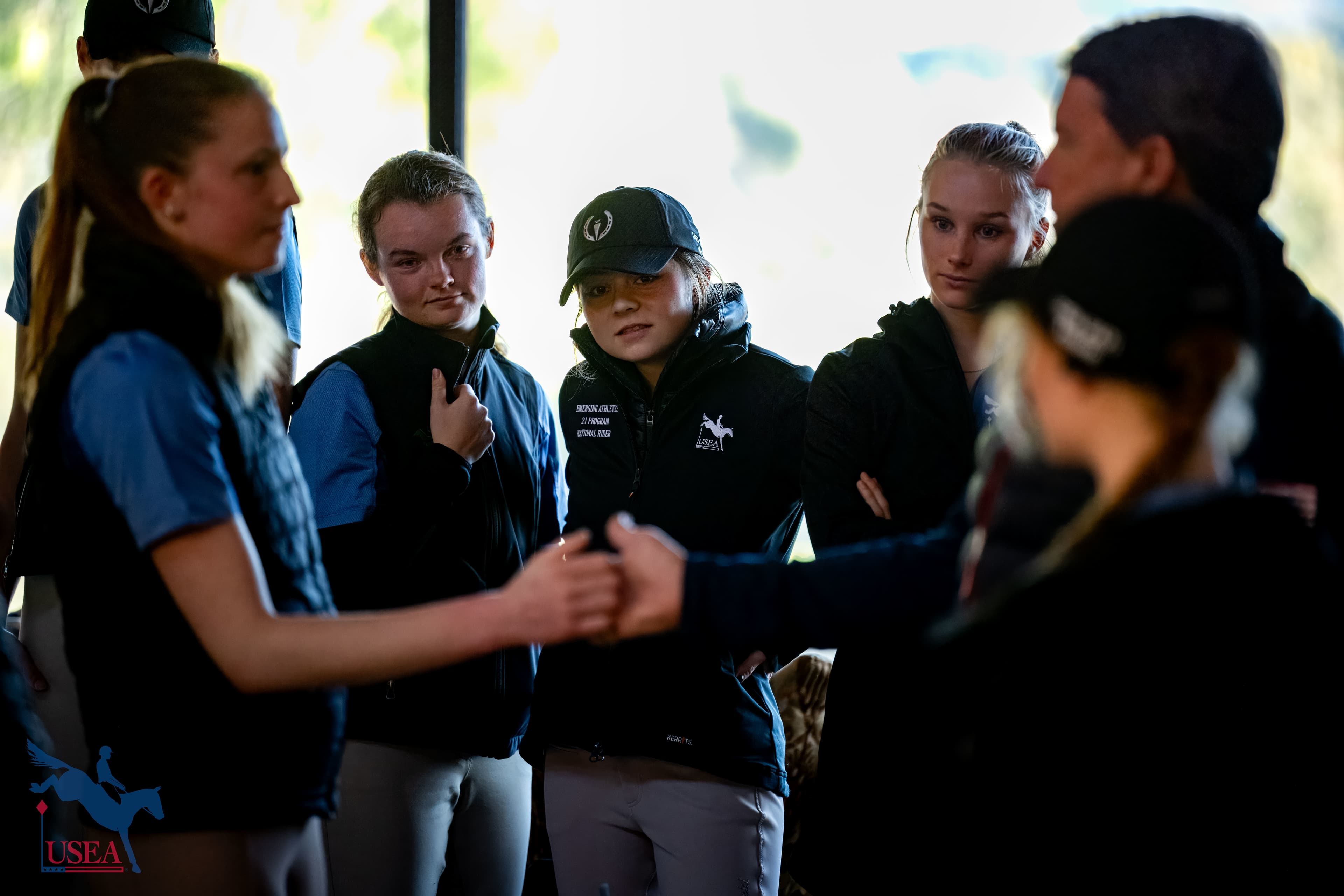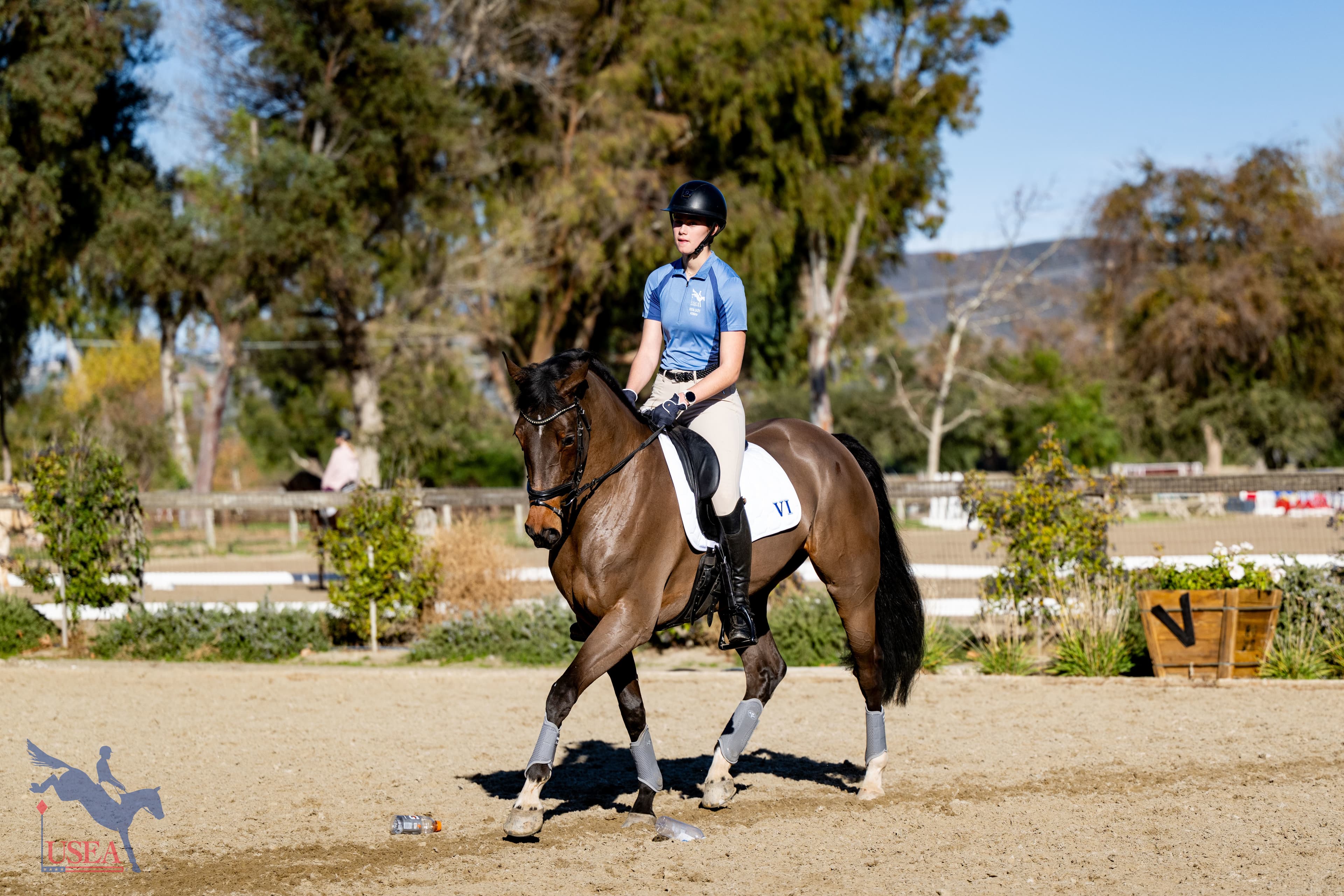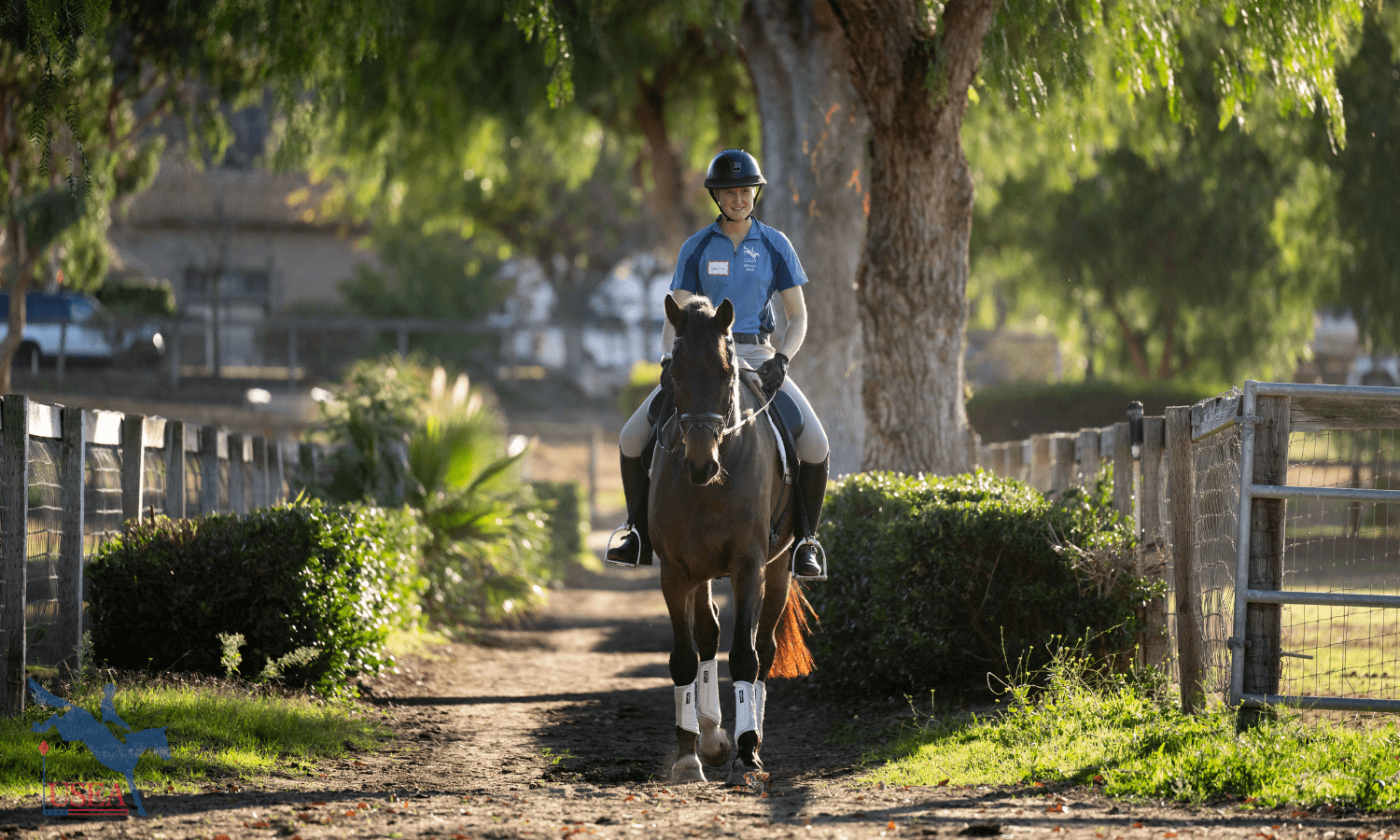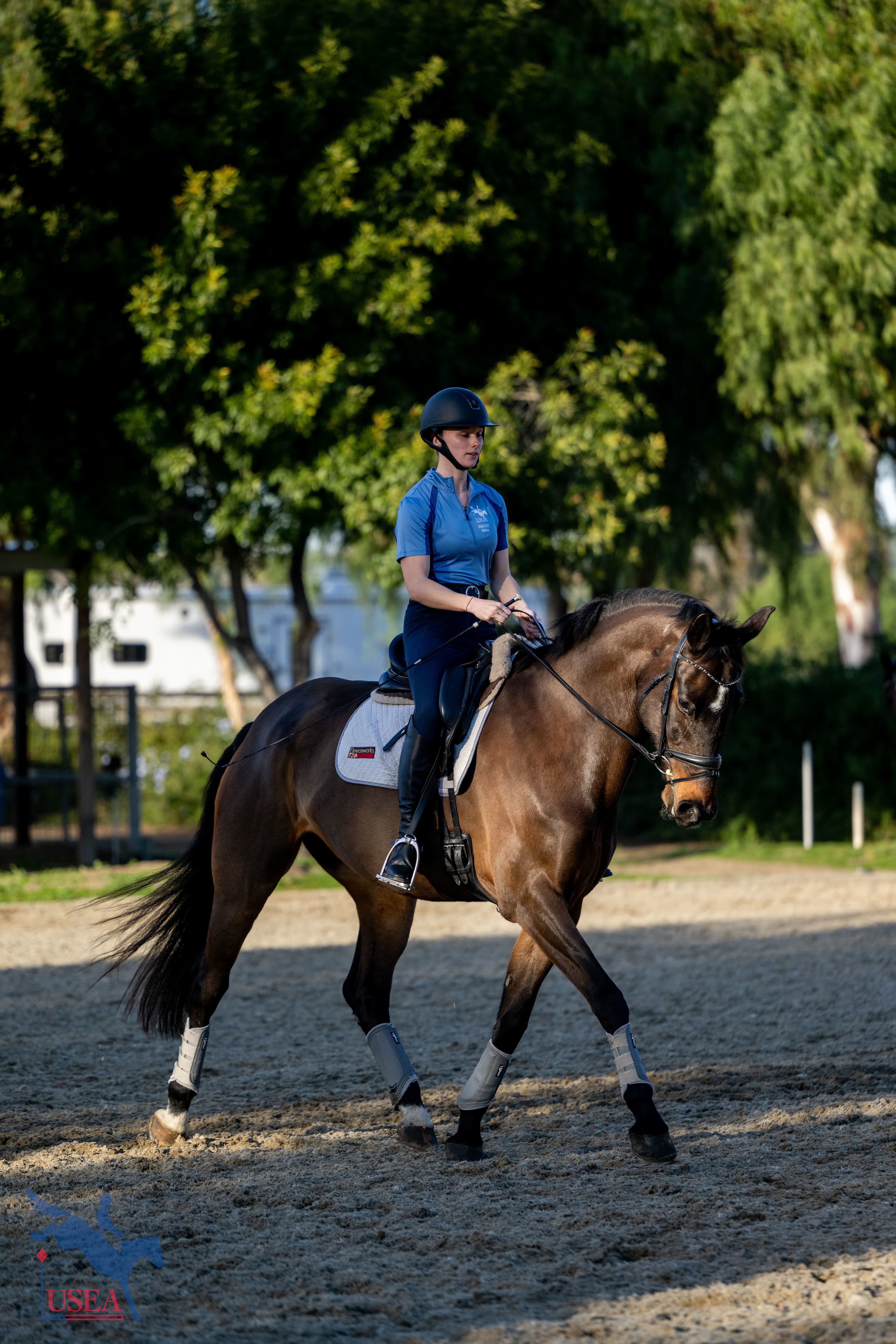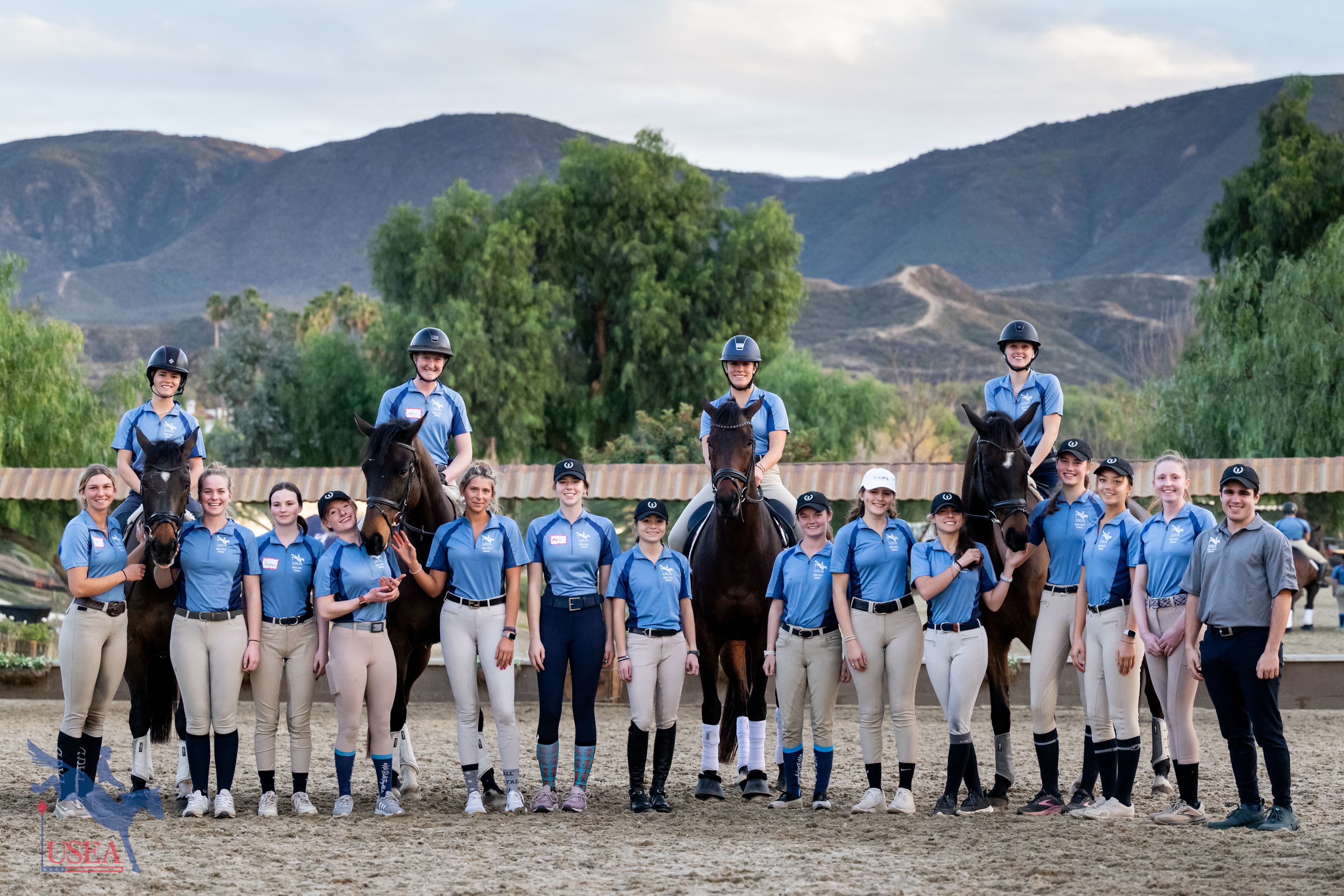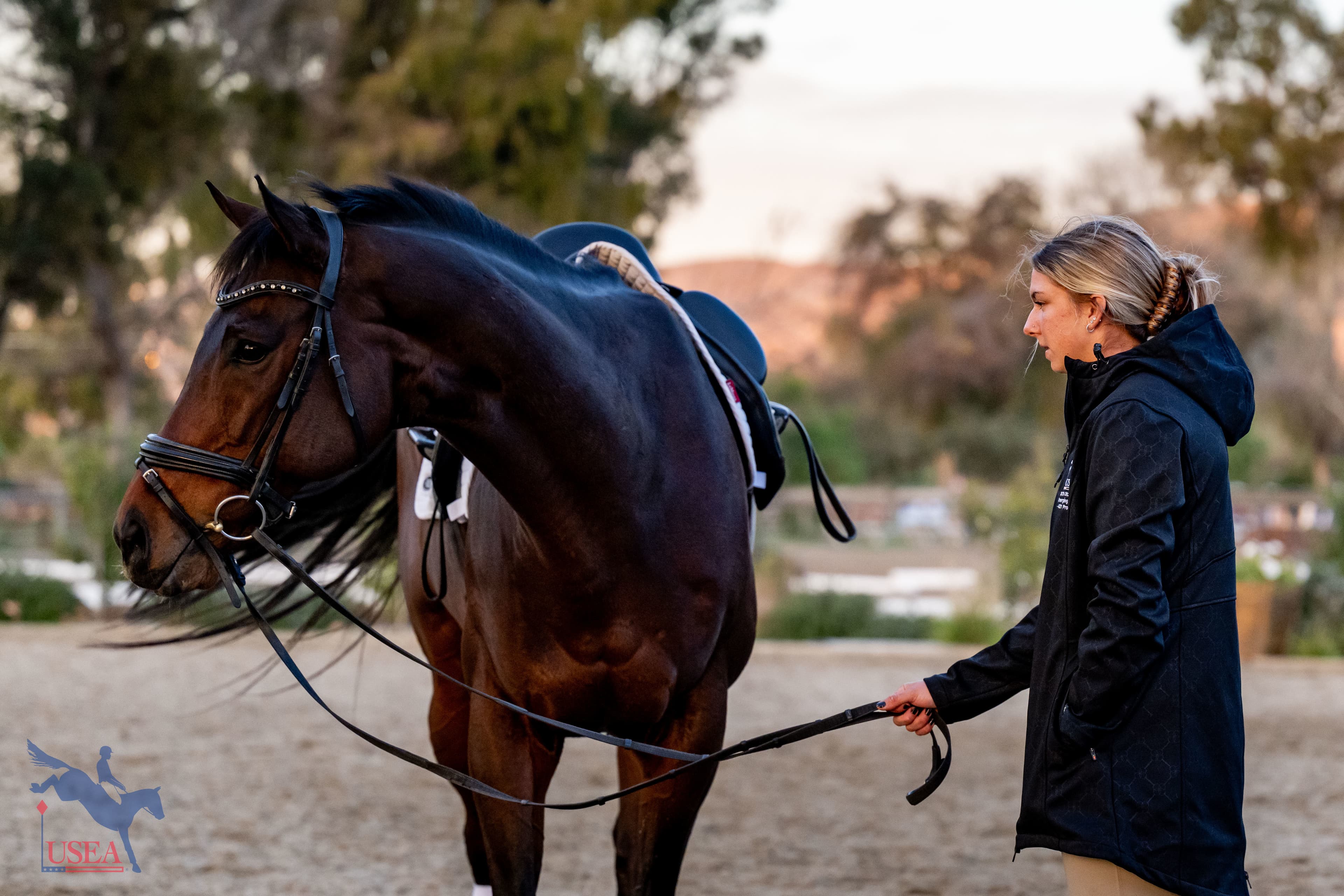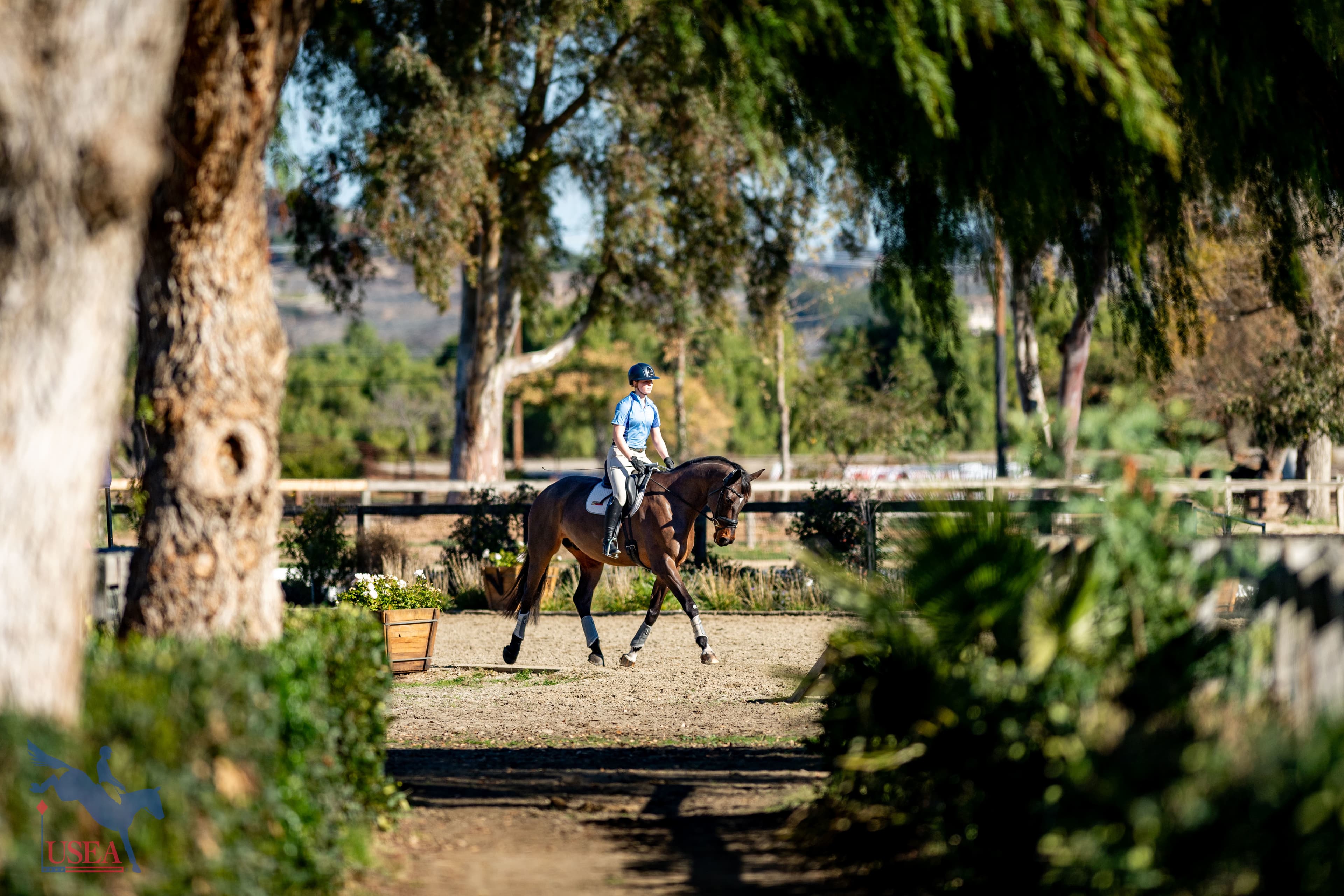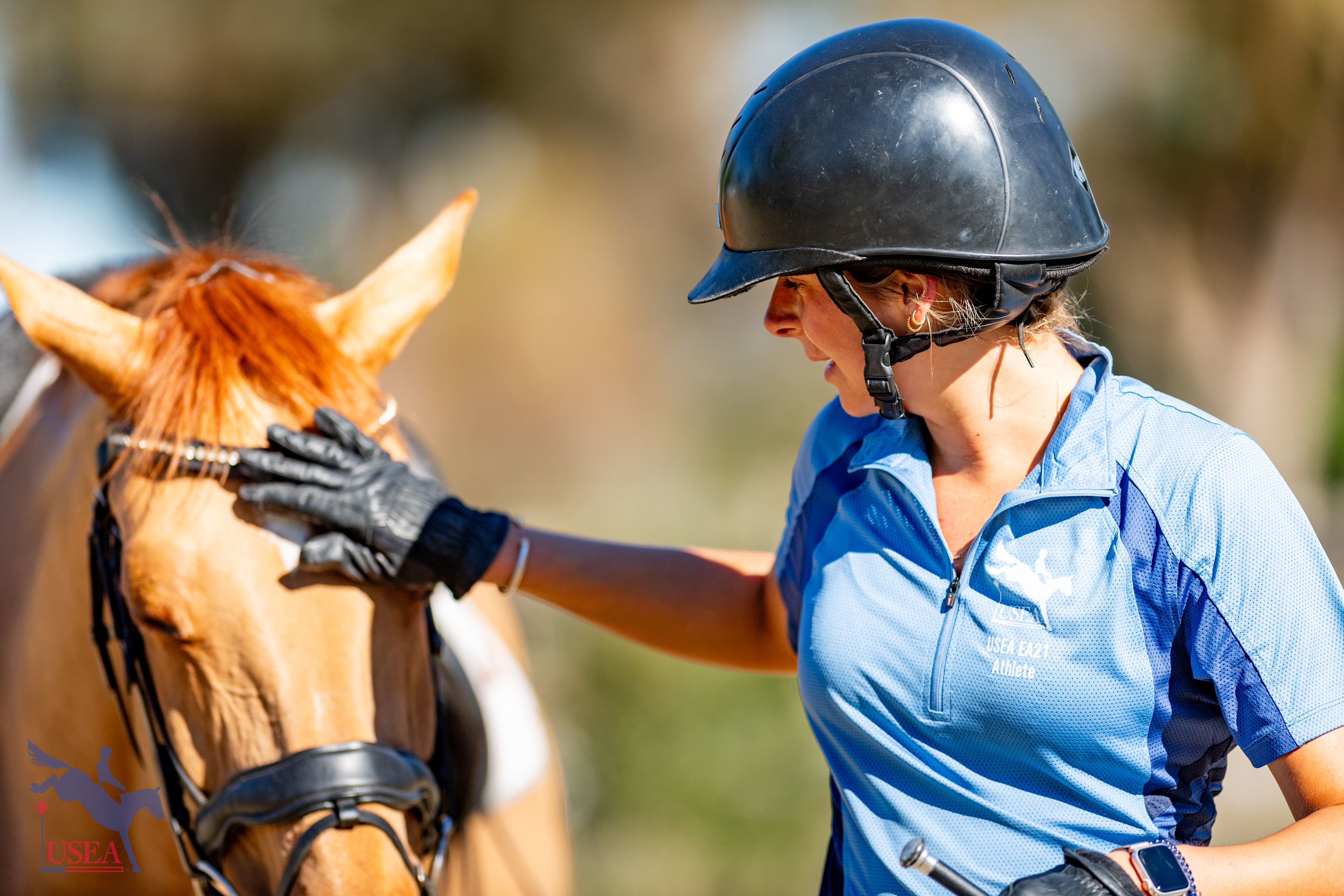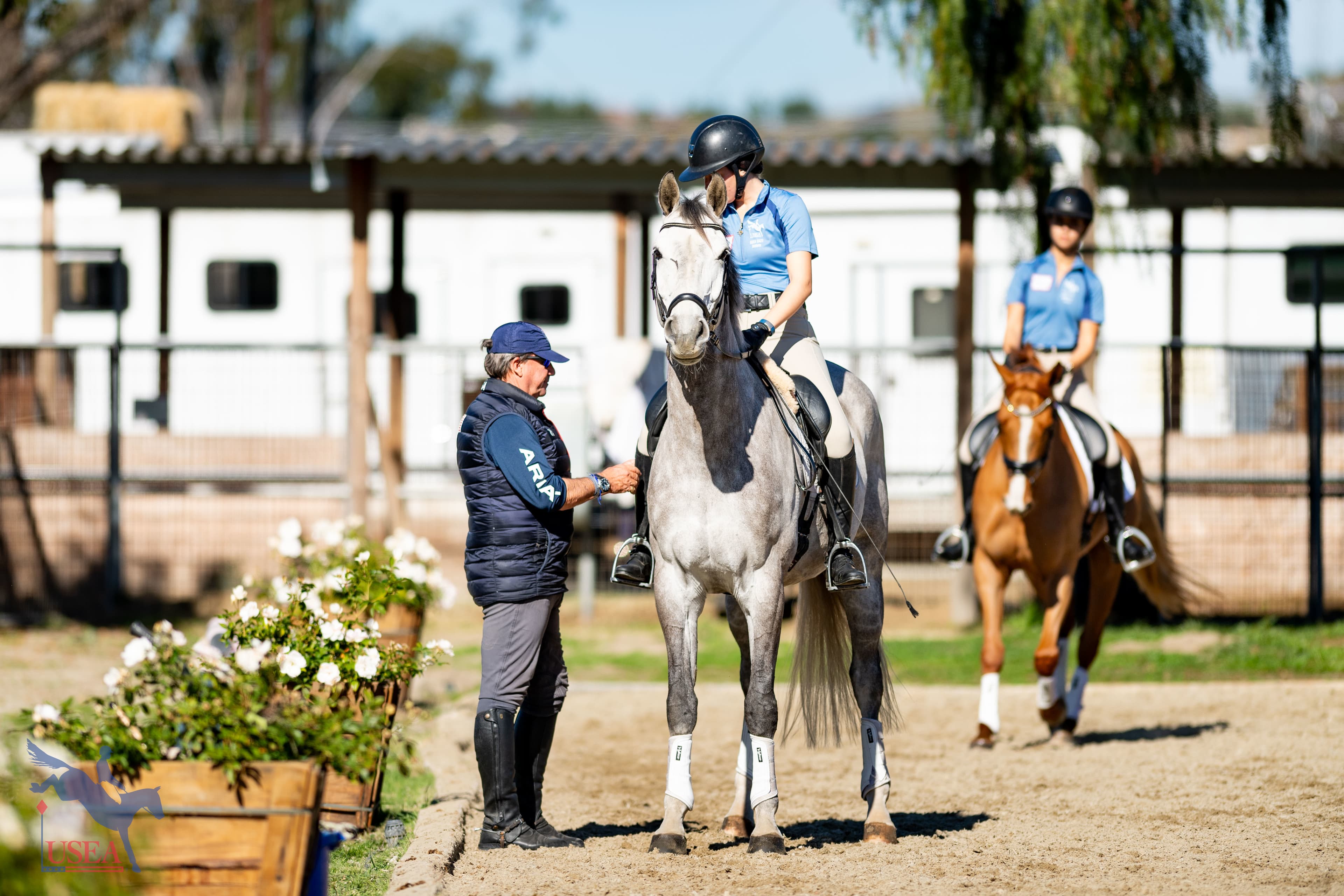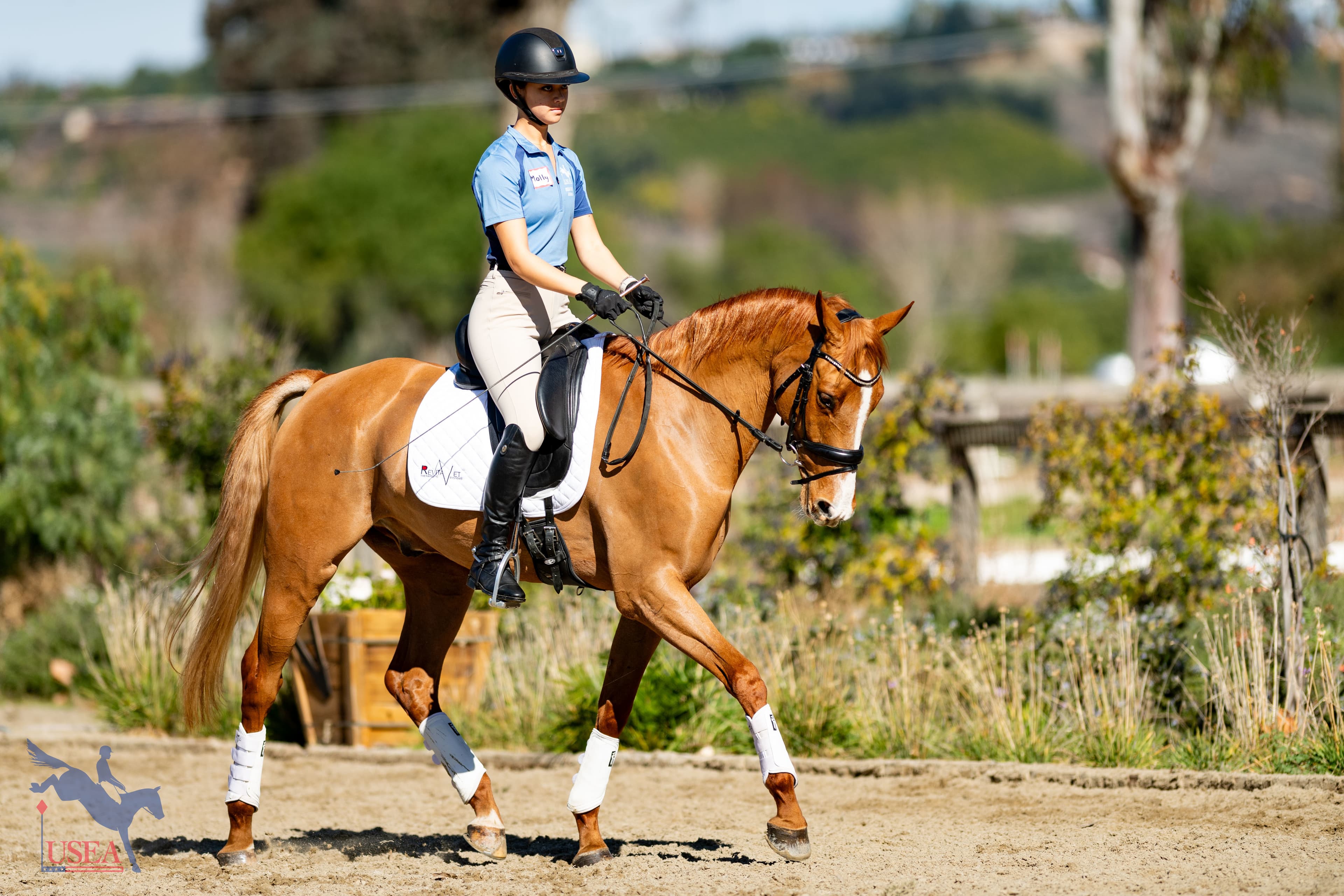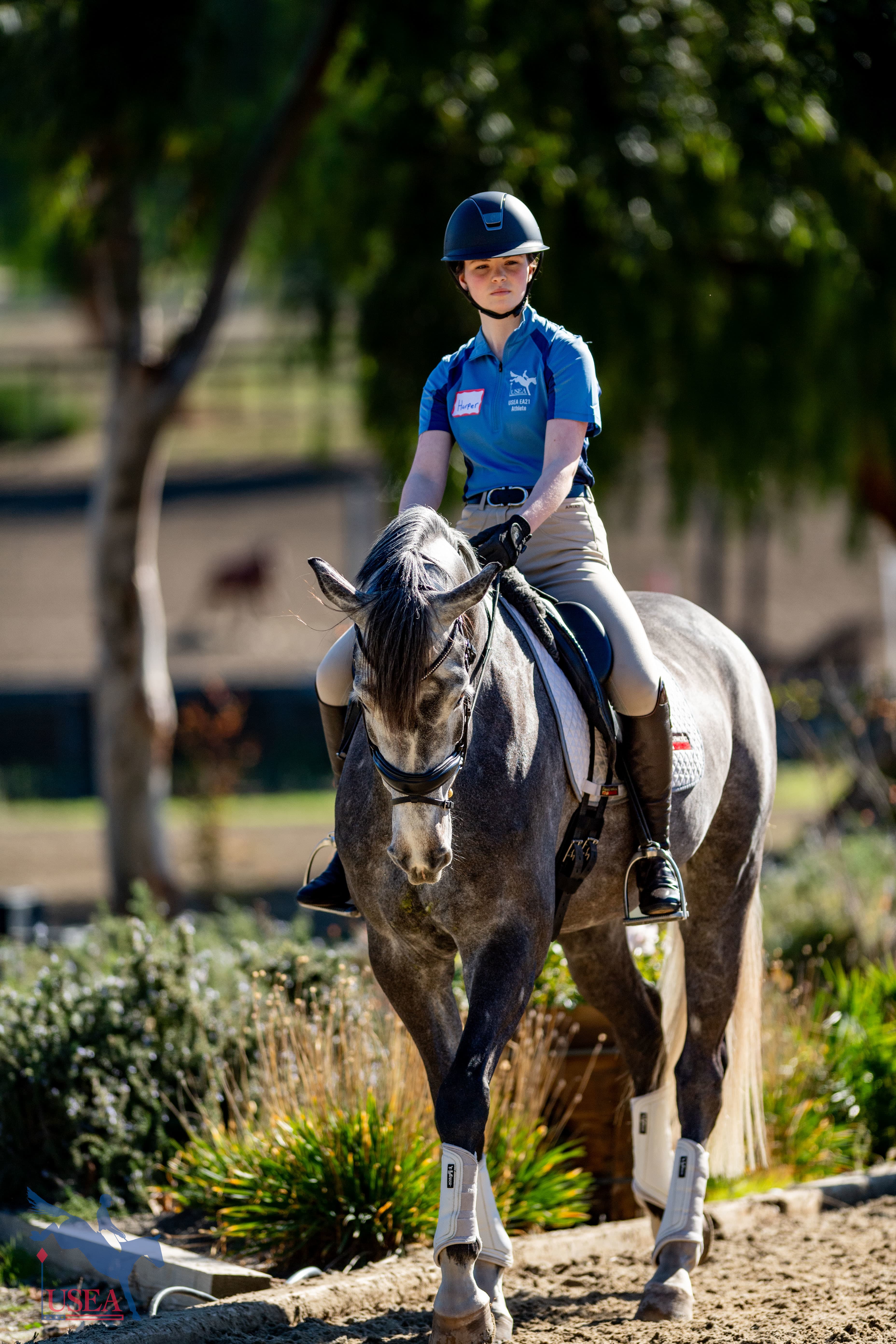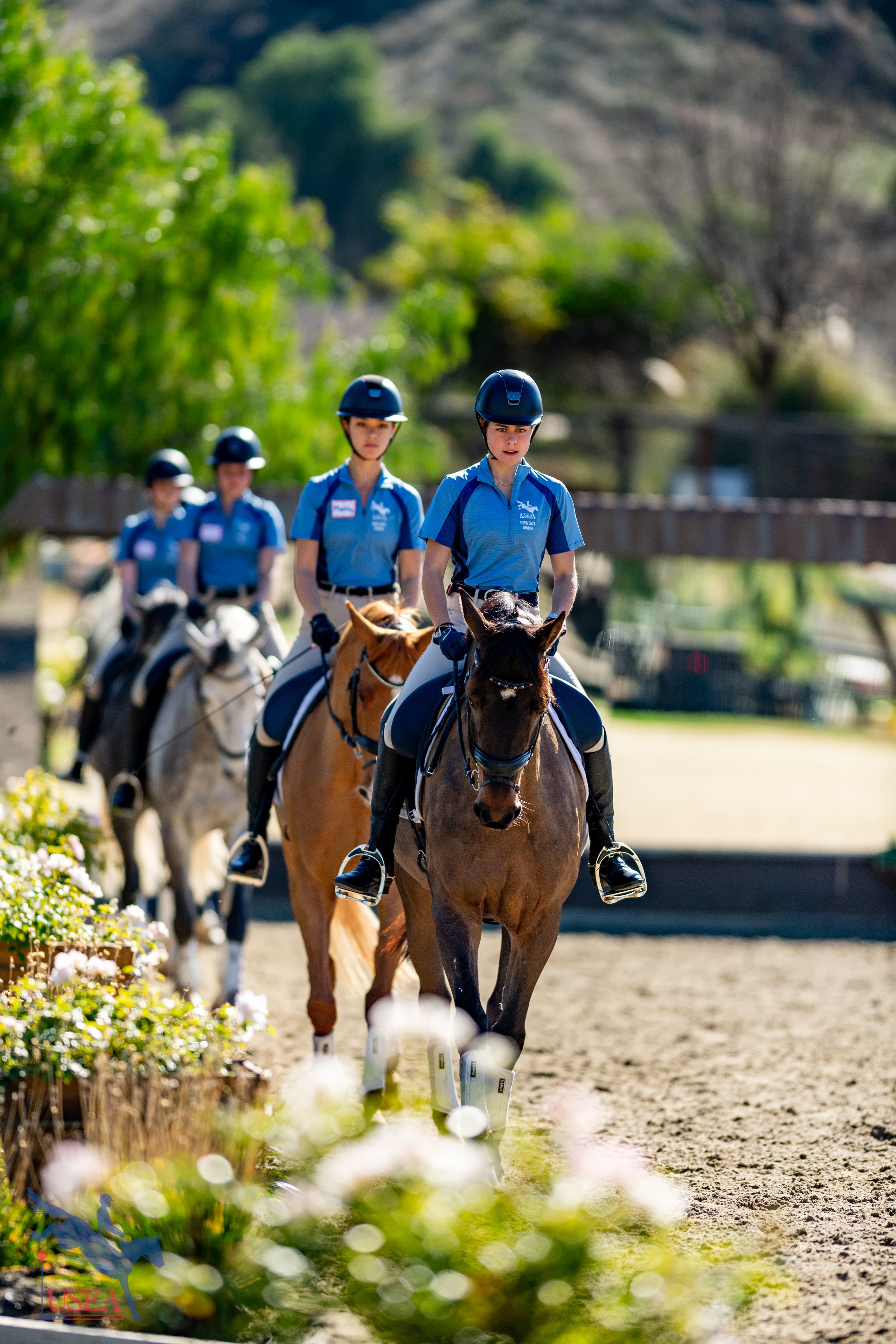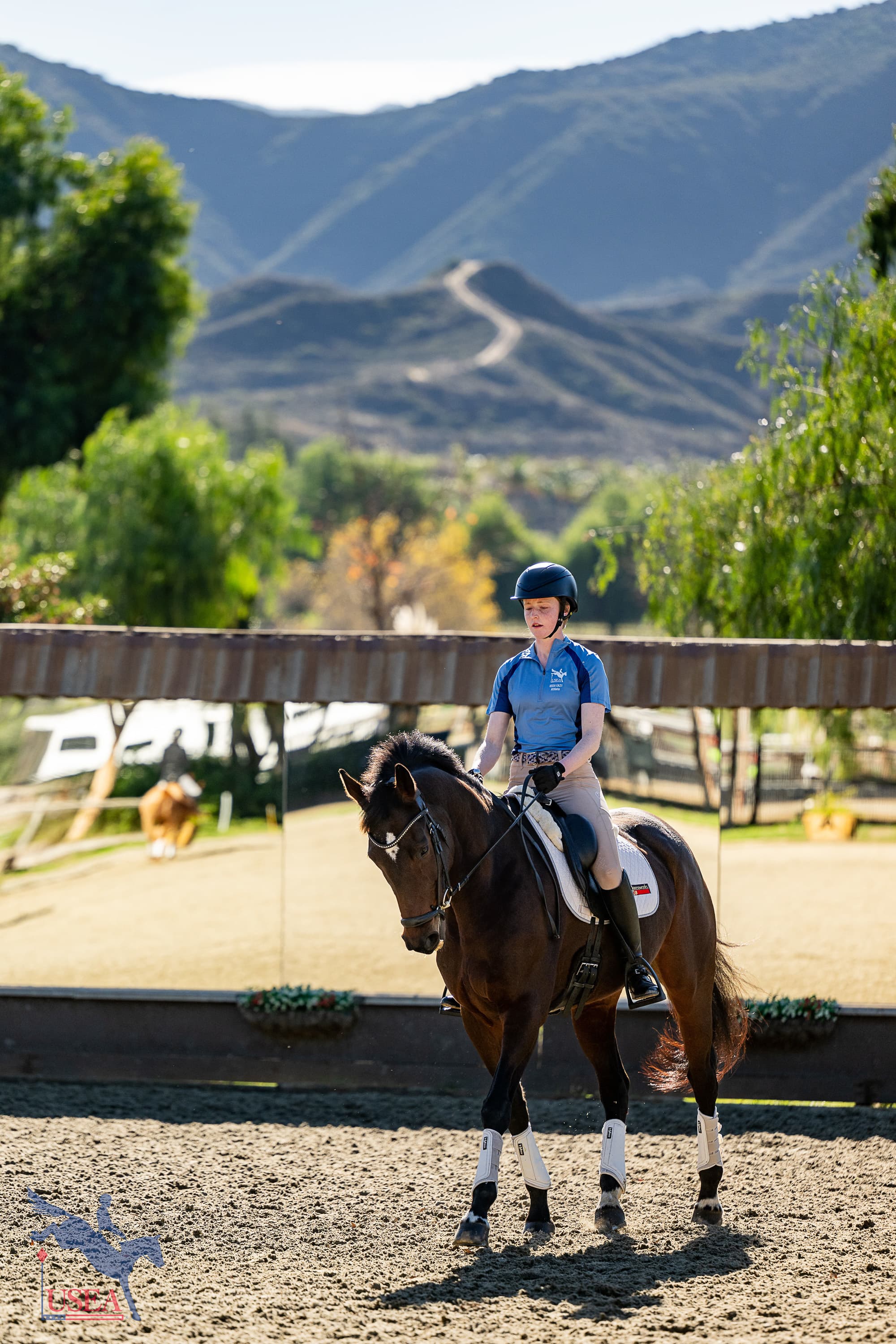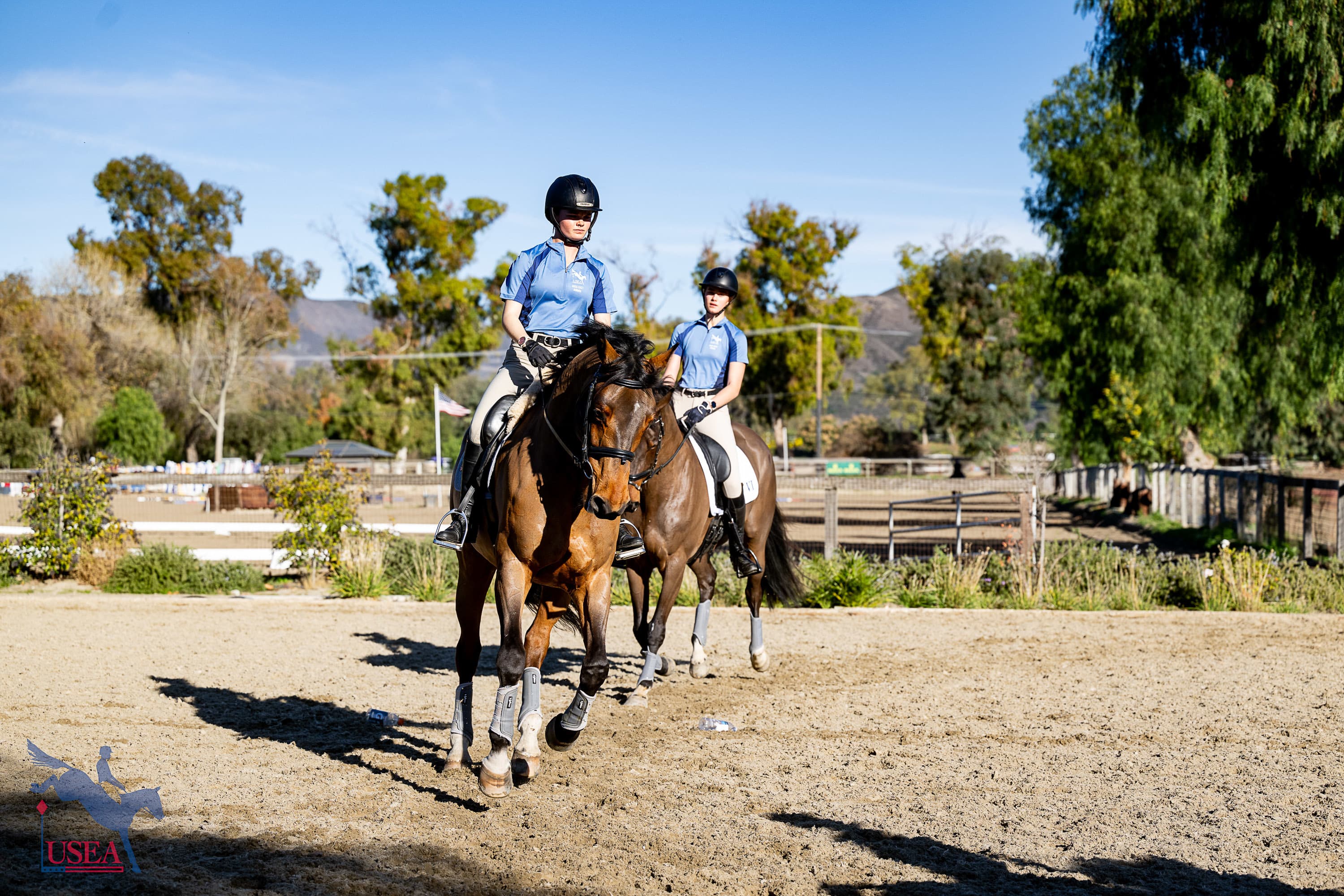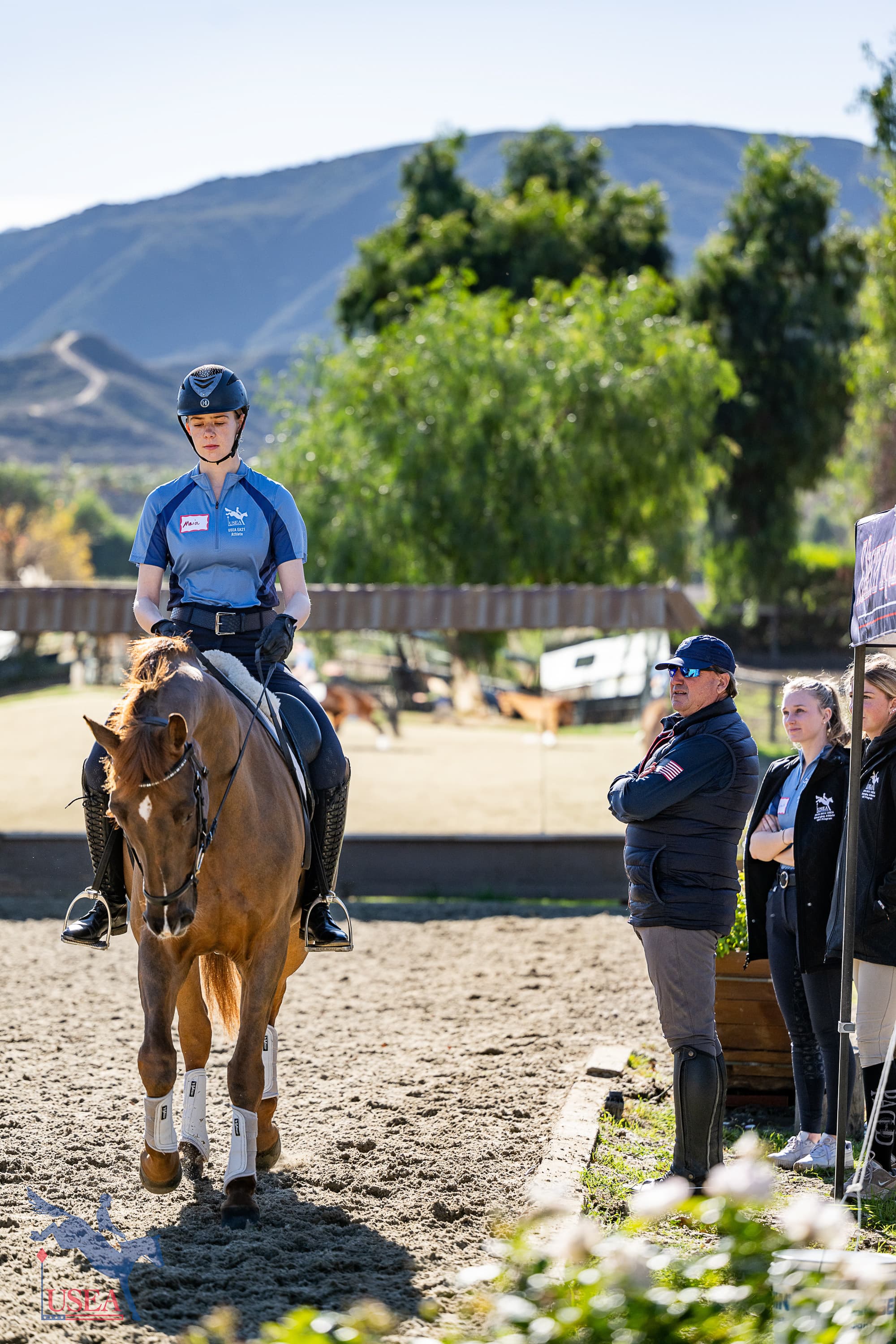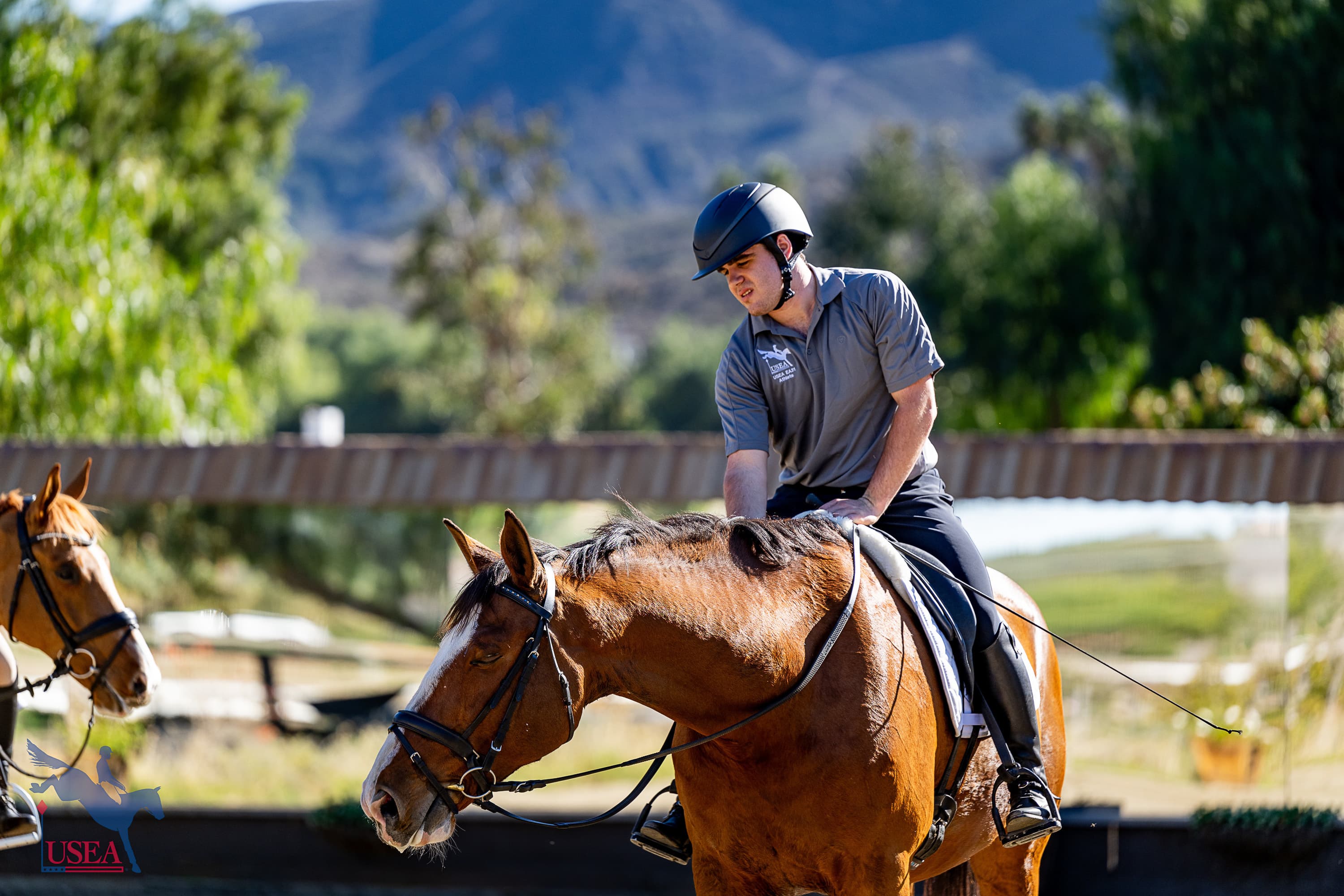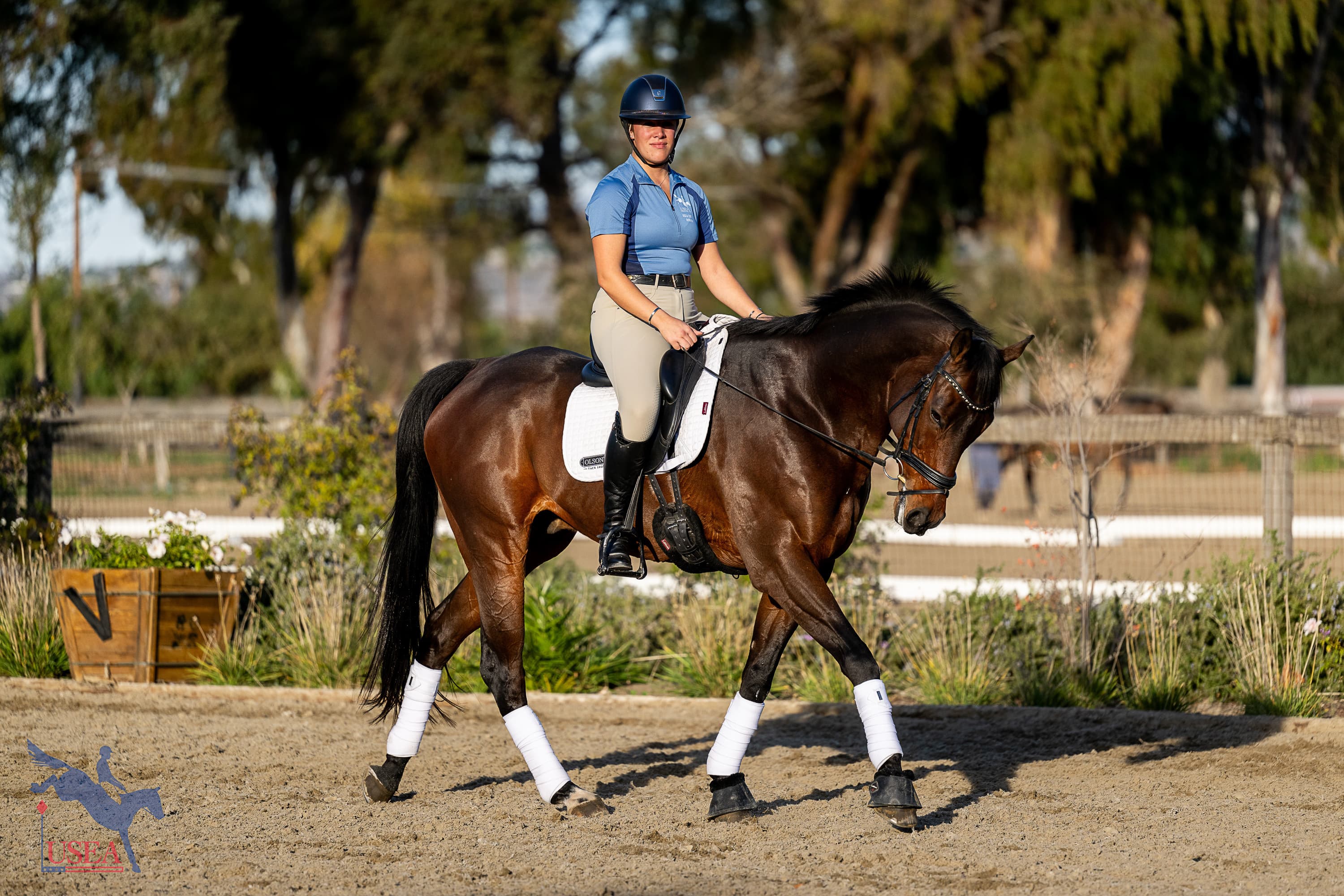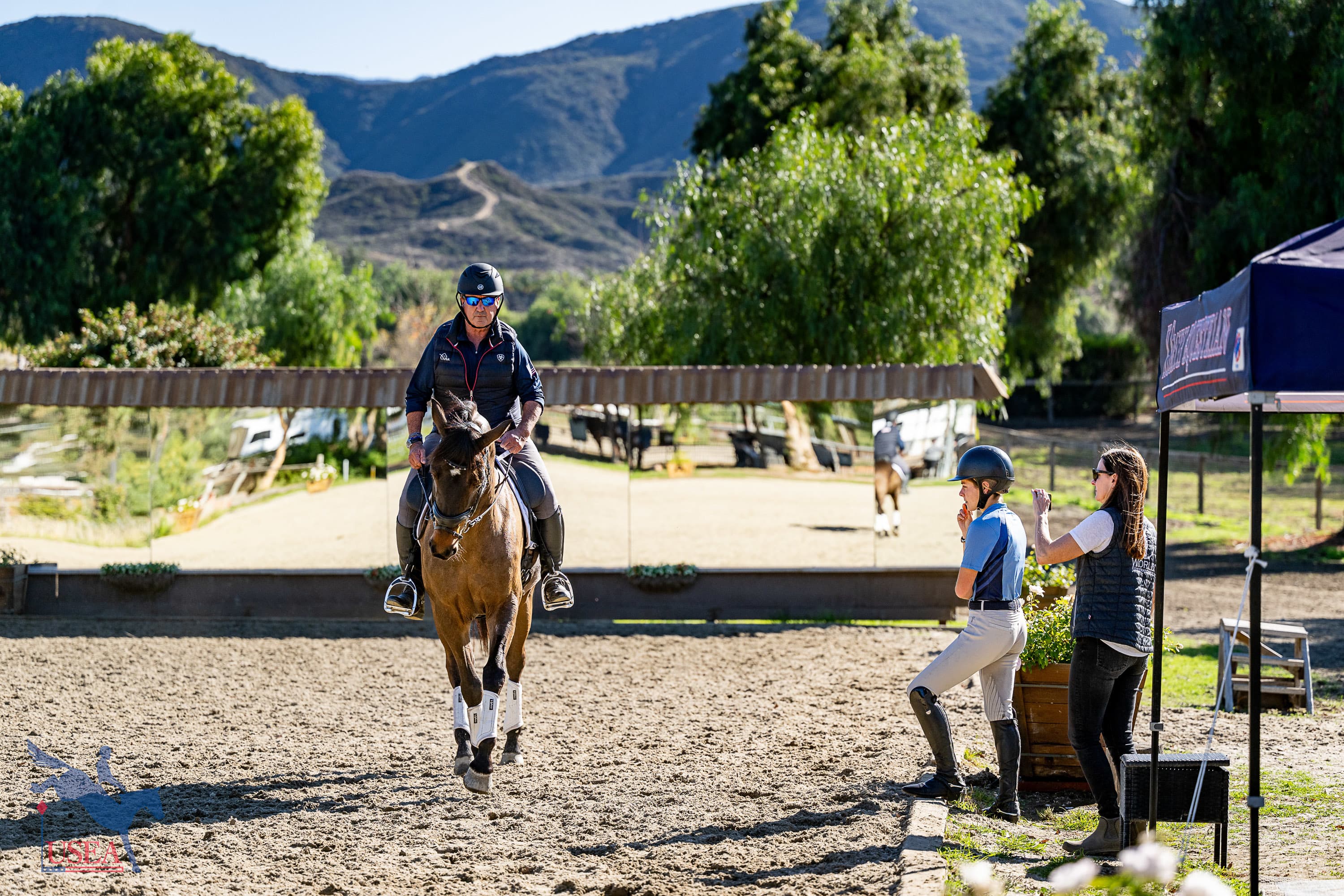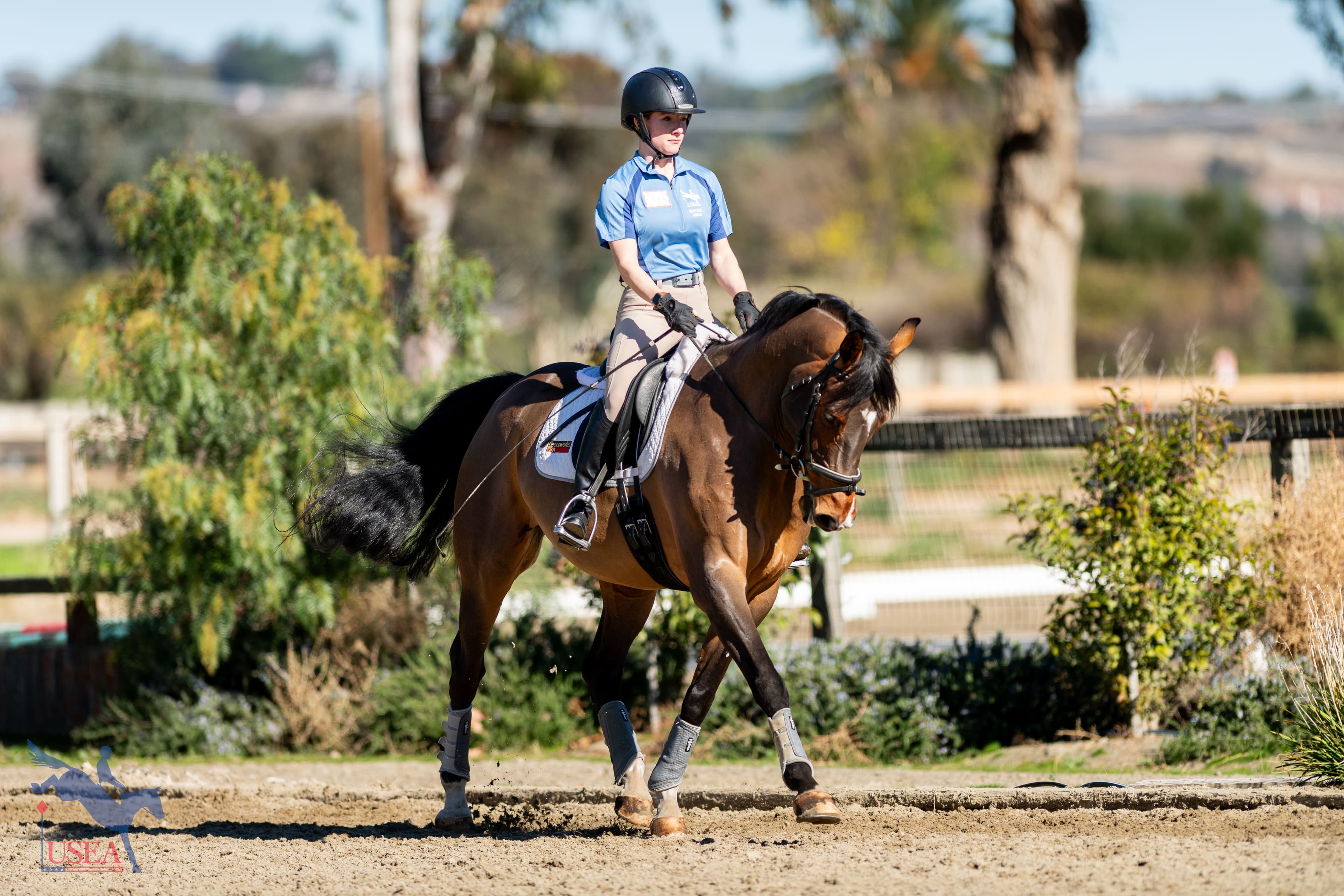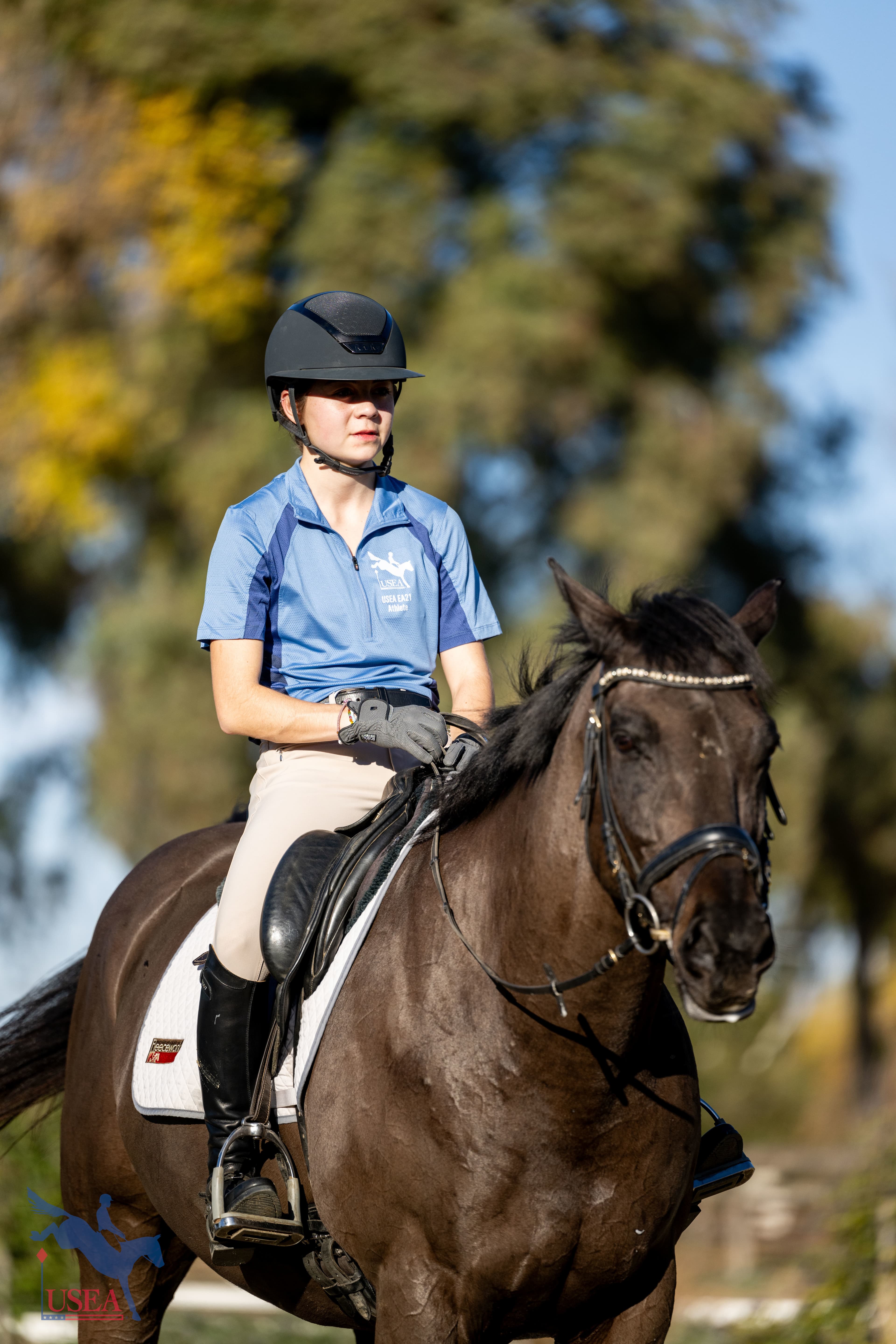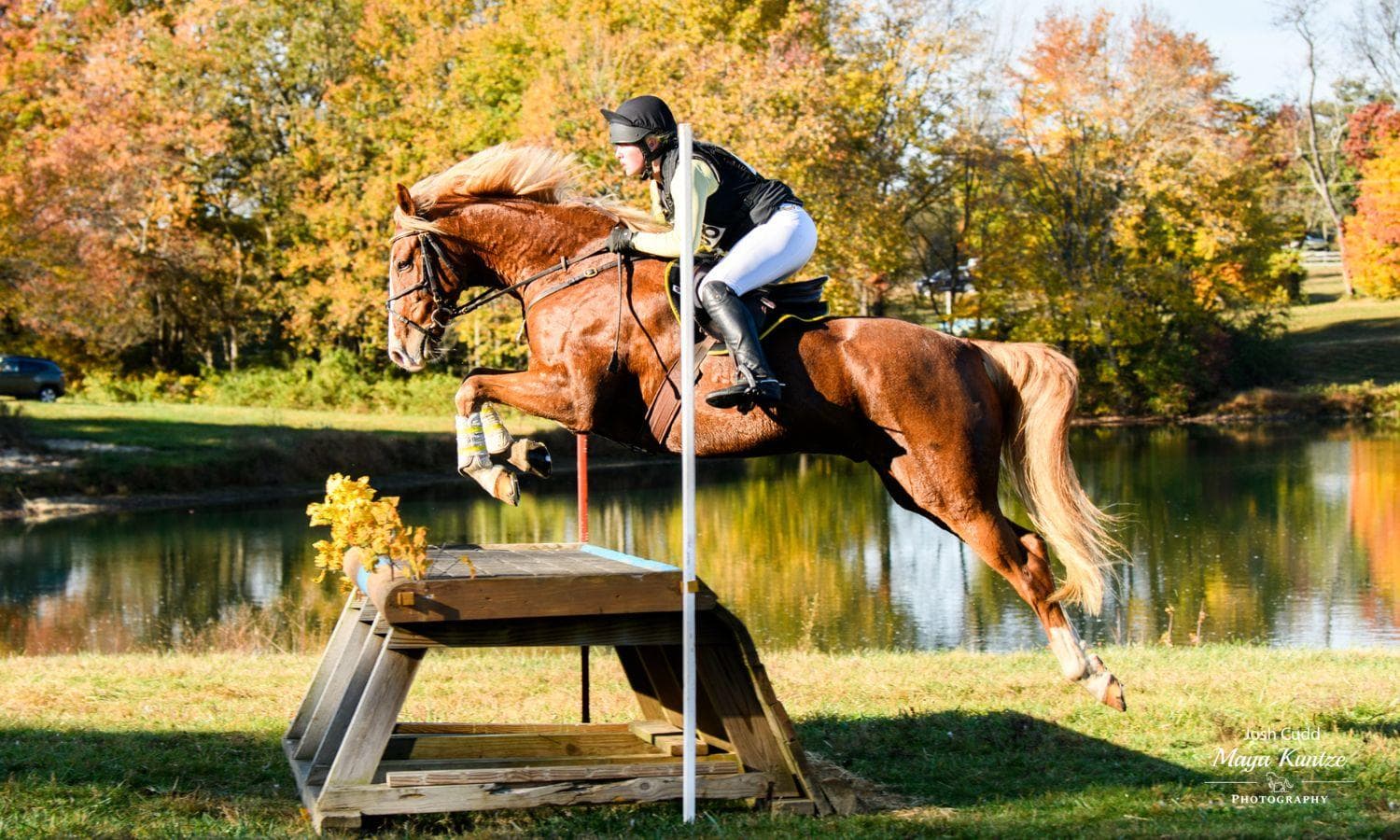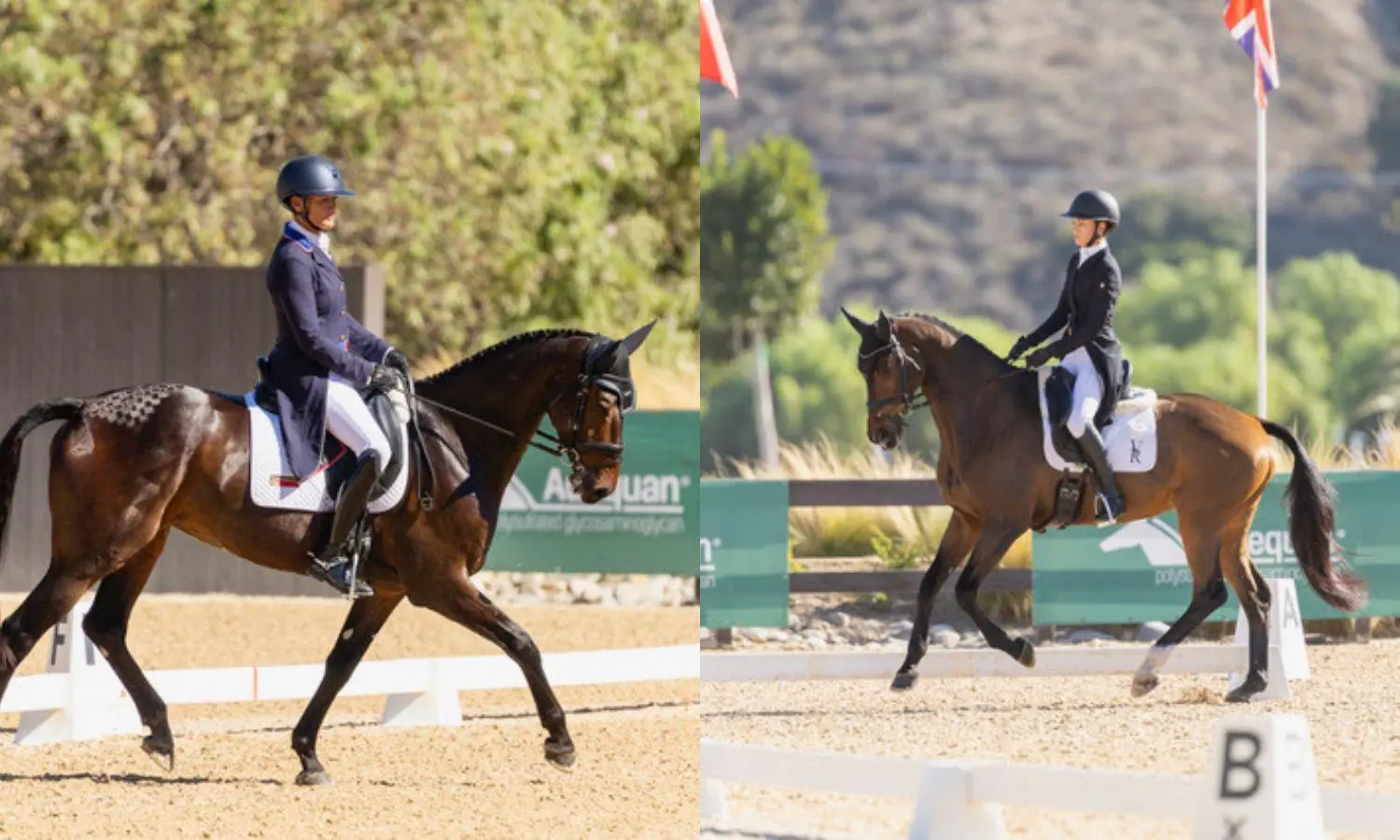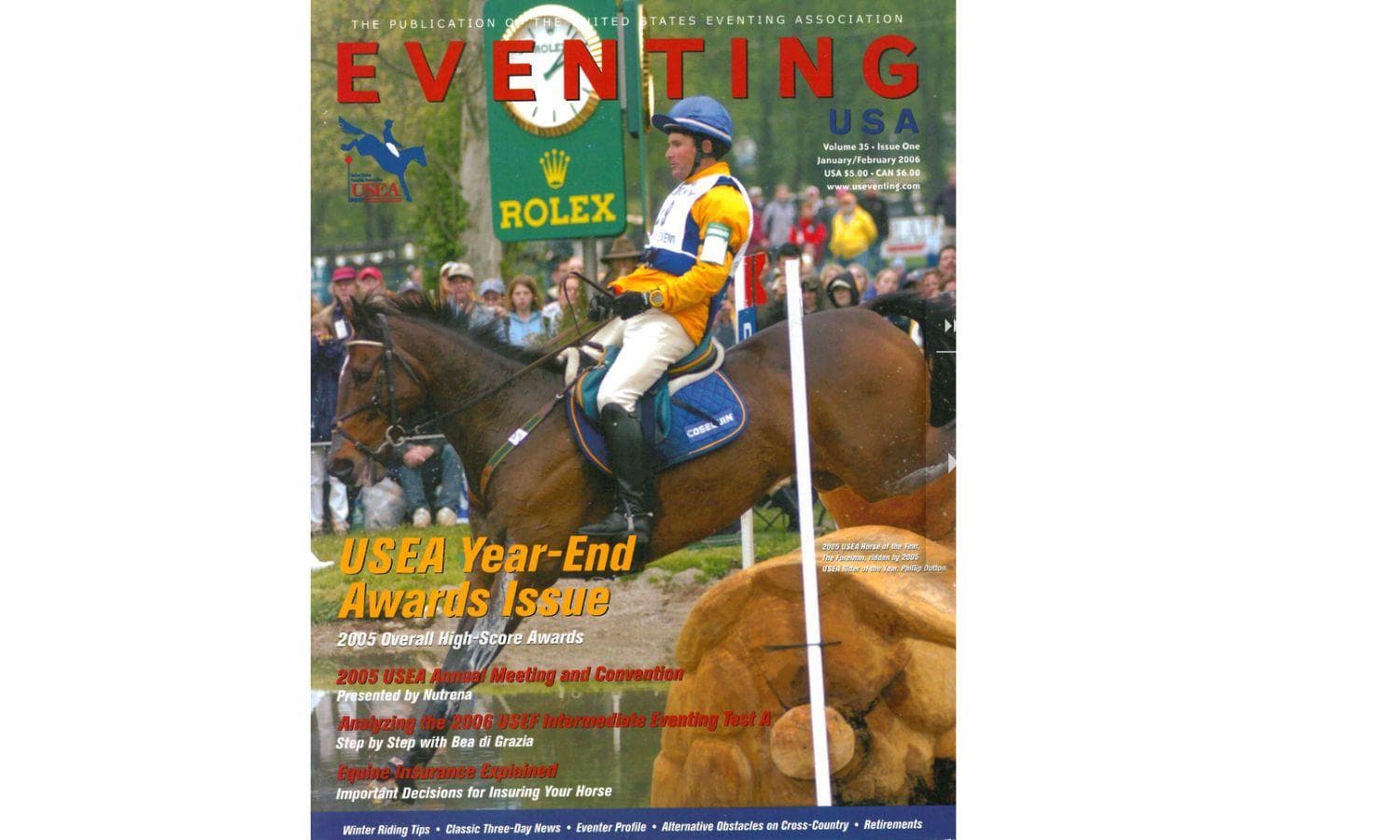EA21 National Camp Kicks Off with Theory on Day 1
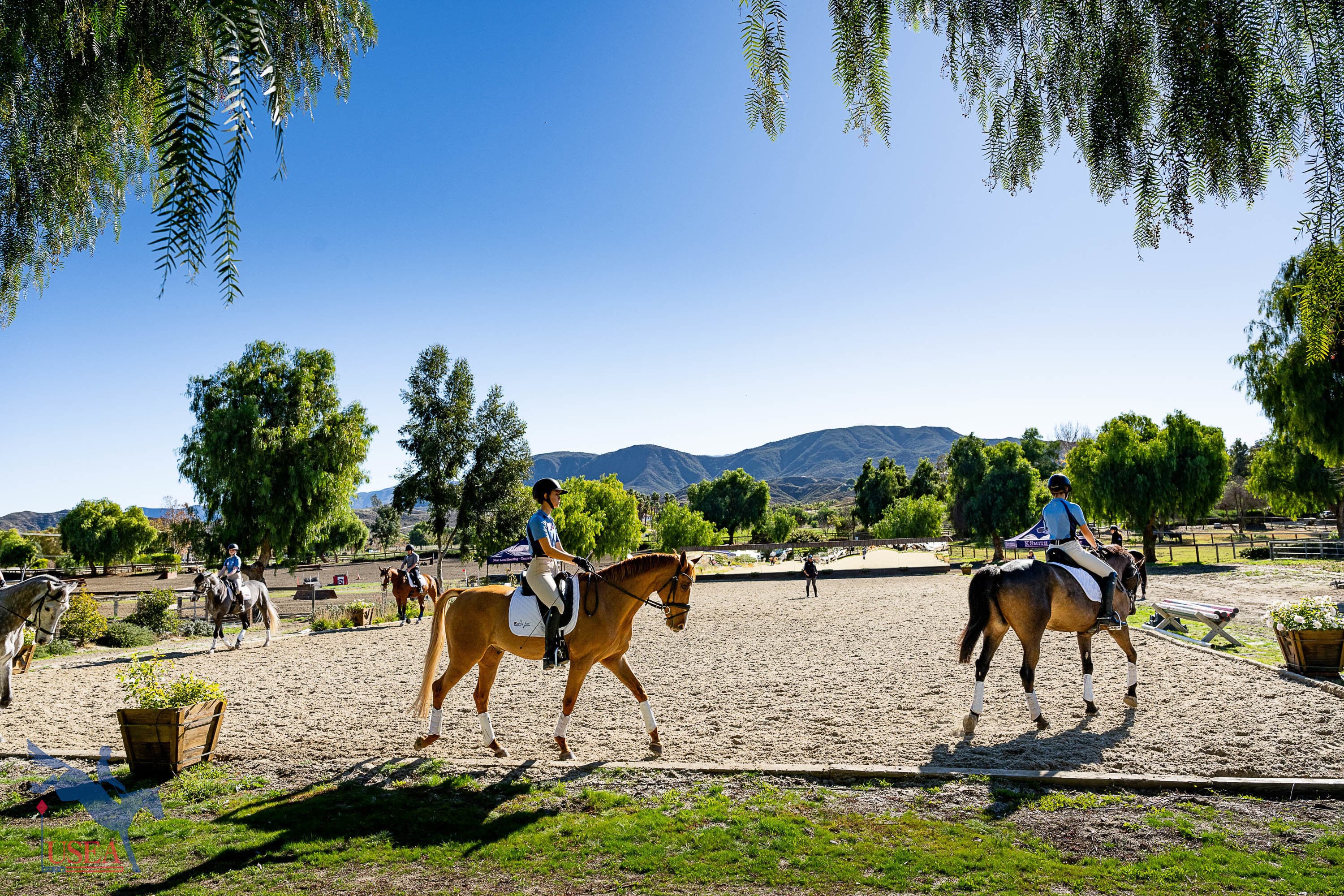
Temecula, Calif.—Jan. 2—The second day of the new year dawned on the beginning of the USEA’s Emerging Athlete U21 National Camp at Kingsway Farm. Eighteen athletes were selected for the 2024 edition, and they all arrived ready for five days of intense training, in and out of the saddle.
From the German training scale to sports training theory to aid applications, it was a theory-heavy day led by eventing legend David O’Connor, the EA21 Director of Coaching.
“The point of the [German training] scale is for you to think about what’s missing. It’s always a mixture, never linear,” he said as he opened his classroom session. “It’s a tool to help you when you’re struggling.”
In a sport of the highest highs and the lowest lows, the chances of struggle are much higher than those of success. Having tools in your back pocket help keep emotions in check and create positive reactions. For these young athletes, the tool to be acquired was making theory clear and simple to communicate to their horses.
All day, O’Connor would have them break down concepts into their simplest cores. Rather than asking what would need to be done to correct a particular movement, he would ask what had happened, a deceptively simple question which required a lot of thought before answer. “Study” was the word of the day.
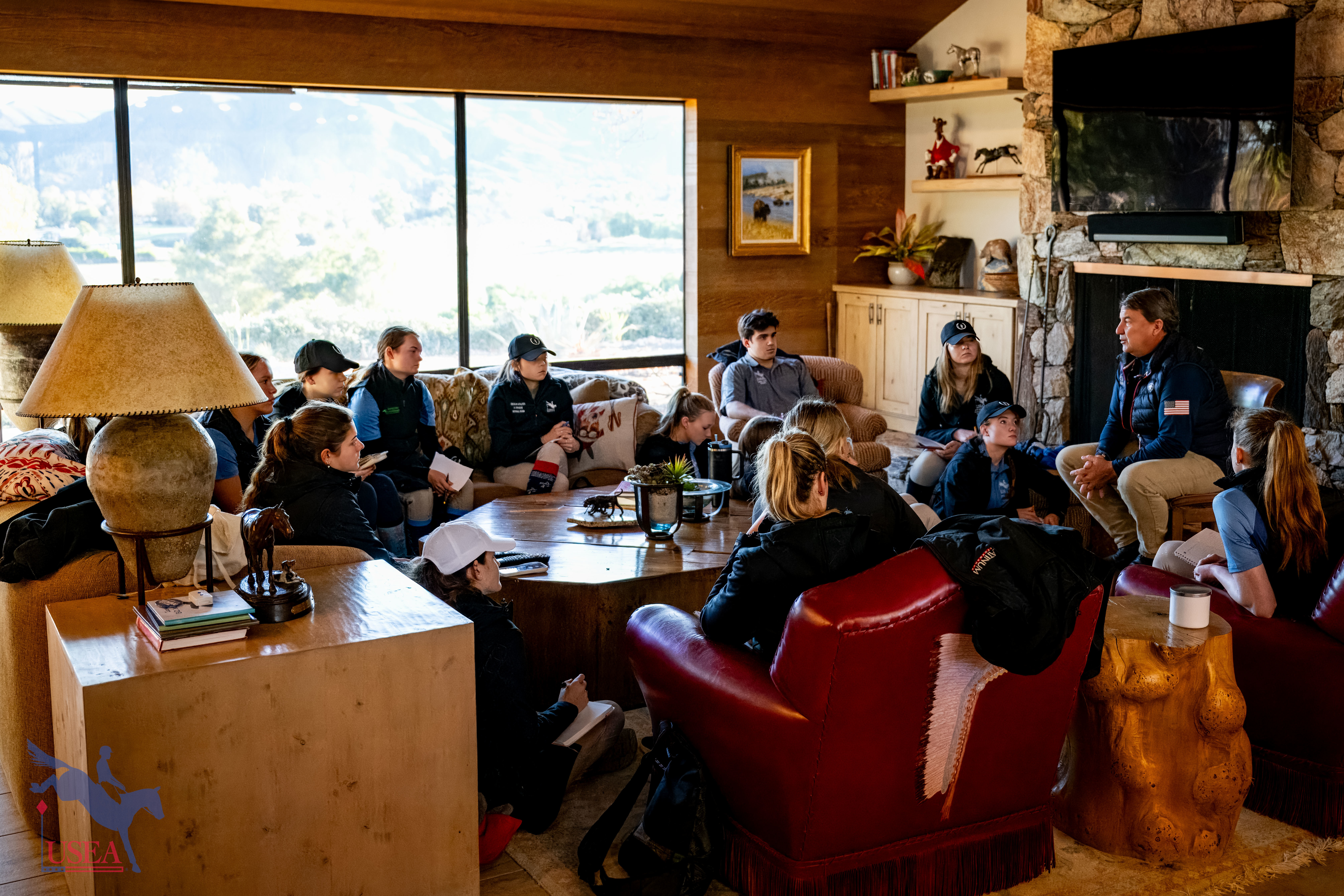
“Study what effect the motion [of the aid or movement of the horse] has before you decide what to do with it.”
“This exercise is a study of the seat.”
“We should treat ourselves as professional athletes and study simple drills of technique.”
From the classroom session to the riding lessons, he asked riders to think critically, building on each regional clinic’s mission of mindful and thoughtful analysis and understanding. The purpose of this? To make theory into instinct. Only once instinct had been ingrained could riders start the change from learning to train, to training to compete, to competing to win.
Having confirmed the core concepts of the German training scale and clear understanding of how they are achieved, before any rider could swing their leg over a horse’s back, they were set an on-the-ground exercise. Put in partners, they were asked to hold each other’s hand as if they were holding the rein. Then they would practice giving and receiving pressure as a simulation of contact. Rather than using their hands as tempted, they were asked to use their shoulders, back, and hips to give and take pressure.
Then it was time to ride.
Only four of the selected riders were able to bring their own horses. The rest were riding horses generously borrowed from Bec Braitling, Kaylawna Smith-Cook, Teresa Harcourt, and Tamie Smith. “It’s kind of fun having almost all of them on catch rides,” Braitling said.
As young athletes with professional aspirations, it provided a real opportunity to learn how to ride any horse and immediately use the skills they were learning to navigate new situations.
Riders were asked to start developing instinct in a style of riding known as drill riding. Four to five riders would come together in a line and were asked to maintain a horse-length distance between them the whole time. It would be up to them to manage their own horse’s pace and length of step to stay in their place in the group, requiring them to always be thinking four or five strides ahead.
Any loss of forward planning or zoning out would quickly catch up not only to them but also to the rider behind, disturbing the whole line. No circles or passing allowed.
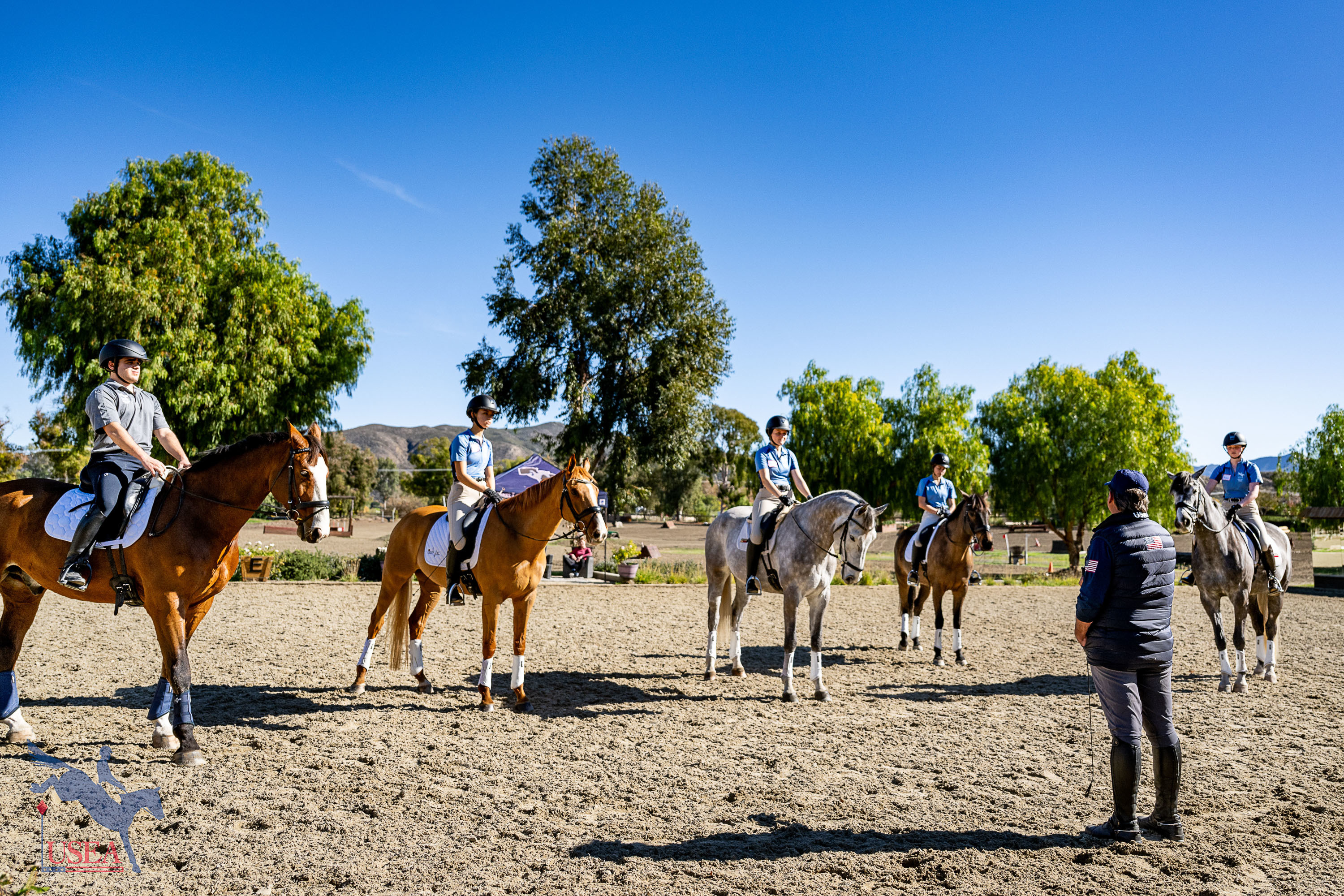
“It was really cool to watch the horses go correctly when the riders stopped micromanaging them,” Kayla Dumler said of watching the sessions before her ride. By imposing a more rigid structure and requiring snap decisions, the drill riding technique quickly led to improved results with better quality gaits, softer riding, and more accurate tracks.
When asked how it felt in the riding, Audrey Ogan said, “the basics fall into place.”
For O’Connor, drill riding brought up one question: “What is rider responsibility and what is horse? First, you’re responsible for direction, then speed, then rhythm, then self-carriage, then timing. You can’t let go of that.” It was the discipline of holding to that responsibility that made improvements real.
With catch rides at various levels from four-star campaigners to young 5-year-olds, the focus was on the riders, and most especially, the effectiveness of their seat in regulating the size of the step and the speed in tandem with their lower leg. Changing direction between two half circles was a popular exercise among all four of the groups. For some, this extended into a three-loop serpentine to hone in on the suppleness and mental engagement. Rather than asking a reactive horse to calm down, they were given a task to accomplish to help them relax.
For other groups, this became an accuracy question. A few riders were struggling to keep the horses’ shoulders level in transitions into collection or extension. In a dressage test, this would leave valuable points on the table as incorrect tracks. So, water bottles as cones marked points on the center line where the tracks of a 20-meter circle would always cross. “Make yourself true,” O’Connor said. “Mark off your points for accuracy. Don’t just make it up; learn how to be exact.”
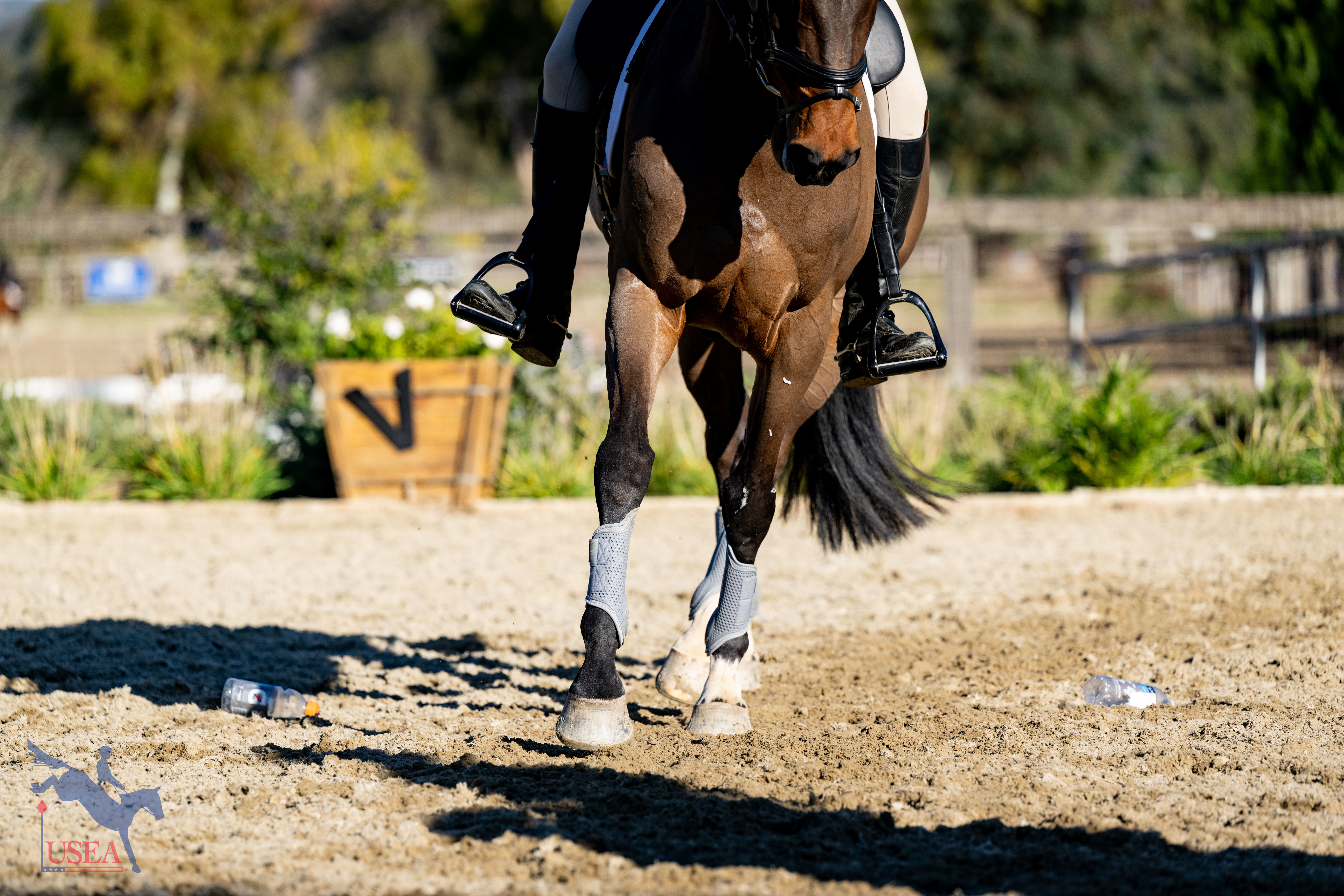
The first dressage day concluded with a chilly sunset and an illustration of effective riding from O’Connor himself when he hopped on a horse that was challenging his rider to achieve proper balance.
Action begins again on Jan. 3 at 8 a.m. PST with a classroom session, and then riding resumes with jumping lessons at 10 a.m.
Helpful Links:
Don't forget to follow the USEA event coverage on social media!
Facebook | Instagram | Twitter
About the USEA Emerging Athlete U21 Program (EA21)
The purpose of the USEA Emerging Athletes U21 Program (EA21) is to identify and provide consistent quality instruction to the next generation of elite event riders. The aim is to create a pipeline for potential team riders by identifying and developing young talent, improving horsemanship and riding skills, and training and improving skills and consistency.
The USEA Emerging Athletes U21 Program was launched in 2022 with a model of five summertime regional clinics taught by selected USEA Eventing Coaches Program (ECP) instructors, leading to a winter national camp consisting of selected Young Riders from the regional clinics. Athletes who are 21 years or younger, are current members of their USEA Young Rider Area program, and are established at the Training Level or higher, are eligible to apply for the EA21 program. Click here to learn more about the USEA EA21 Program.
The USEA would like to thank Kerrits, Ride iQ, Sidelines Magazine and WeRideTogether for sponsoring the USEA Emerging Athletes U21 Program.
